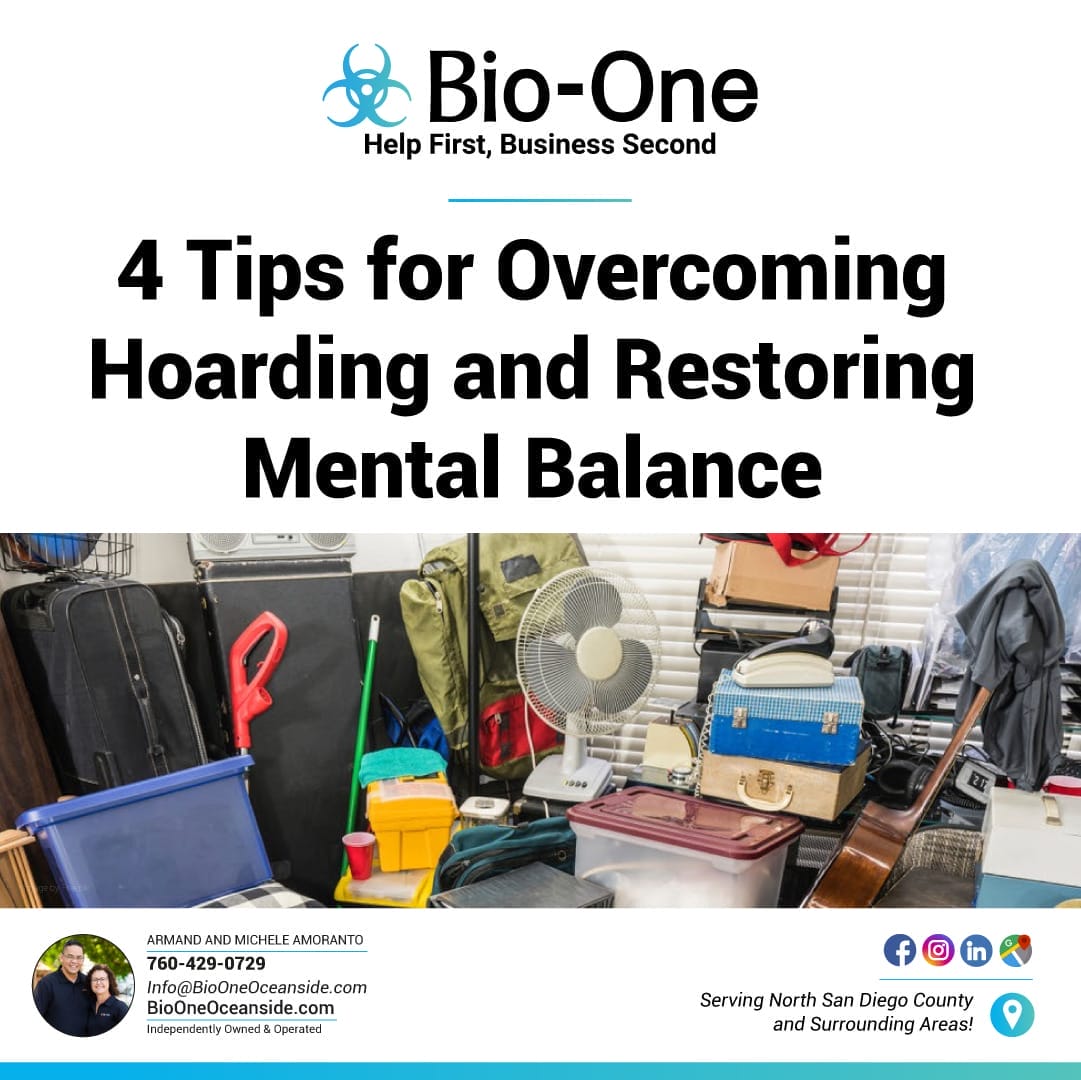
Hoarding disorder is a mental illness that makes it difficult for individuals to discard or let go of possessions, leading to an accumulation of clutter that can disrupt their normal daily lives. This disorder affects individuals differently, some may hoard items such as food and clothing, while others may hoard animals or trash. Hoarding disorder can lead to unsanitary living conditions, social isolation, and even health risks. In this blog, we will discuss four tips for overcoming hoarding and restoring mental balance.
A mental health professional can help diagnose Hoarding Disorder and provide treatment options. Treatment may include therapy, medication, or a combination of both. Cognitive-behavioral therapy (CBT) is a widely used therapy that is effective in treating hoarding. CBT helps individuals recognize and change negative thinking patterns related to hoarding. It also helps individuals develop skills to manage stress, anxiety, and decision-making.

Regardless of the approach the professionals may suggest, don't think of it as something bad, or something that makes you weak. Seeking help is a sign of strength and shows that you are determined to overcome hoarding and improve your mental well-being.
Joining a support group can help overcome Hoarding Disorder. Support groups provide a safe environment where individuals can share experiences, and offer support and strategies for overcoming the condition together. In support groups, hoarders can also relate to others and learn mindfulness techniques that can help reduce anxiety and stress.
Here's a link to the International OCD Foundation, in the Hoarding Section, to find a support group in your area: Find a Hoarding Support Group
Hoarding did not develop overnight, and it can't be overcome overnight. It is essential to start small and set achievable goals. When embarking on the journey of overcoming hoarding, and deciding to clean up your home (or your loved one's home), we recommend the following:
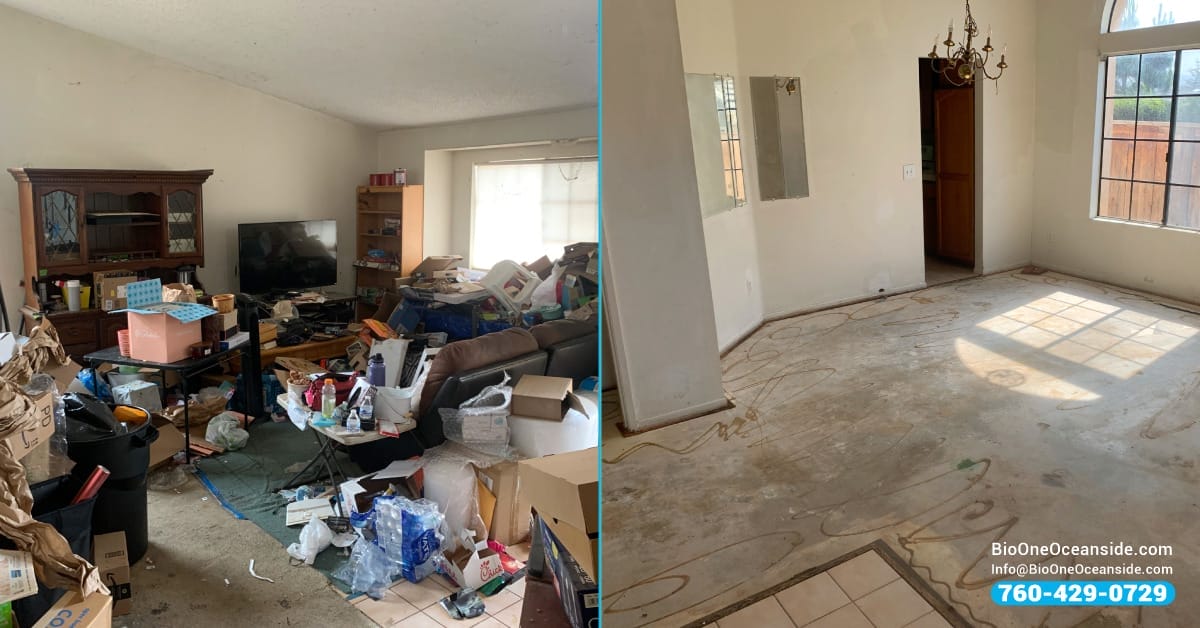
It is also crucial to remember that progress will not always be linear. There may be setbacks and moments of difficulty, but it's important to keep pushing forward and celebrating small victories along the way.
Learn more: The 4-Step Guide for Cleaning a Hoarder's House with Bio-One
While support groups can offer valuable guidance and support, hoarding is a complex mental health condition that may require professional help. Aside from the recommended assistance from a mental health professional, and these tips for overcoming hoarding, a cleanup or restoration company can tackle the dangers of the hoarded home.
Though it's usually ignored, hoarded homes pose many physical hazards that include:
These risks can put the safety and well-being of both the hoarder and their family at risk. Therefore, it's important to seek professional help in extreme cases, especially when facing severe hoarding situations.
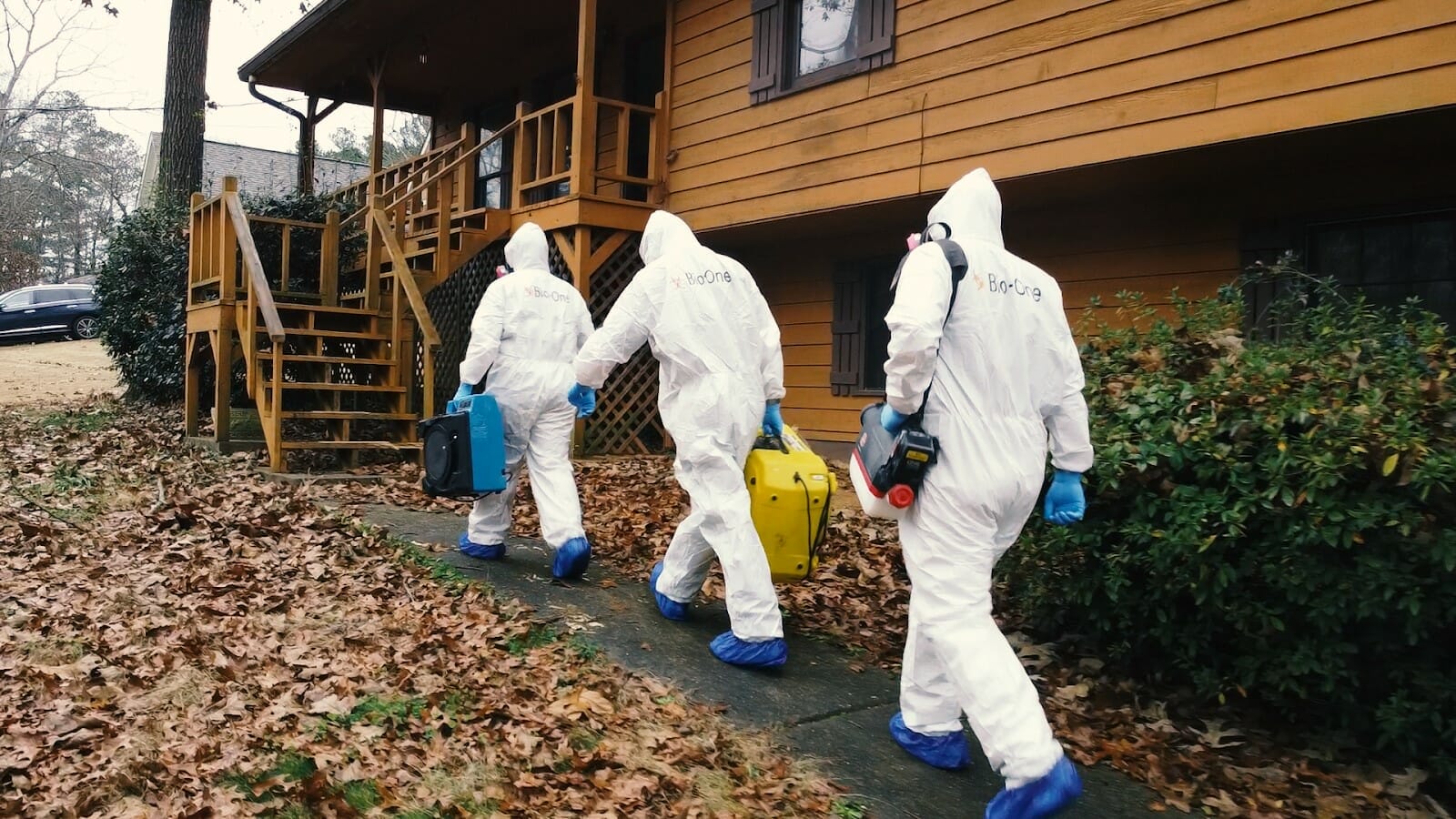
Seeking professional help, starting small, joining a support group, and getting professional cleaning assistance are four tips for overcoming hoarding and restoring mental balance. Make sure to share them with your loved ones, or try your best to apply them to your reality.
At Bio-One of Oceanside, we're here to help. Our professional cleaners are specialized in hoarding cleanup and can offer guidance and support. If you or someone you know is dealing with Hoarding Disorder, contact Bio-One of Oceanside for assistance. Our compassionate team is ready to help you restore your home and take the first step towards overcoming hoarding.
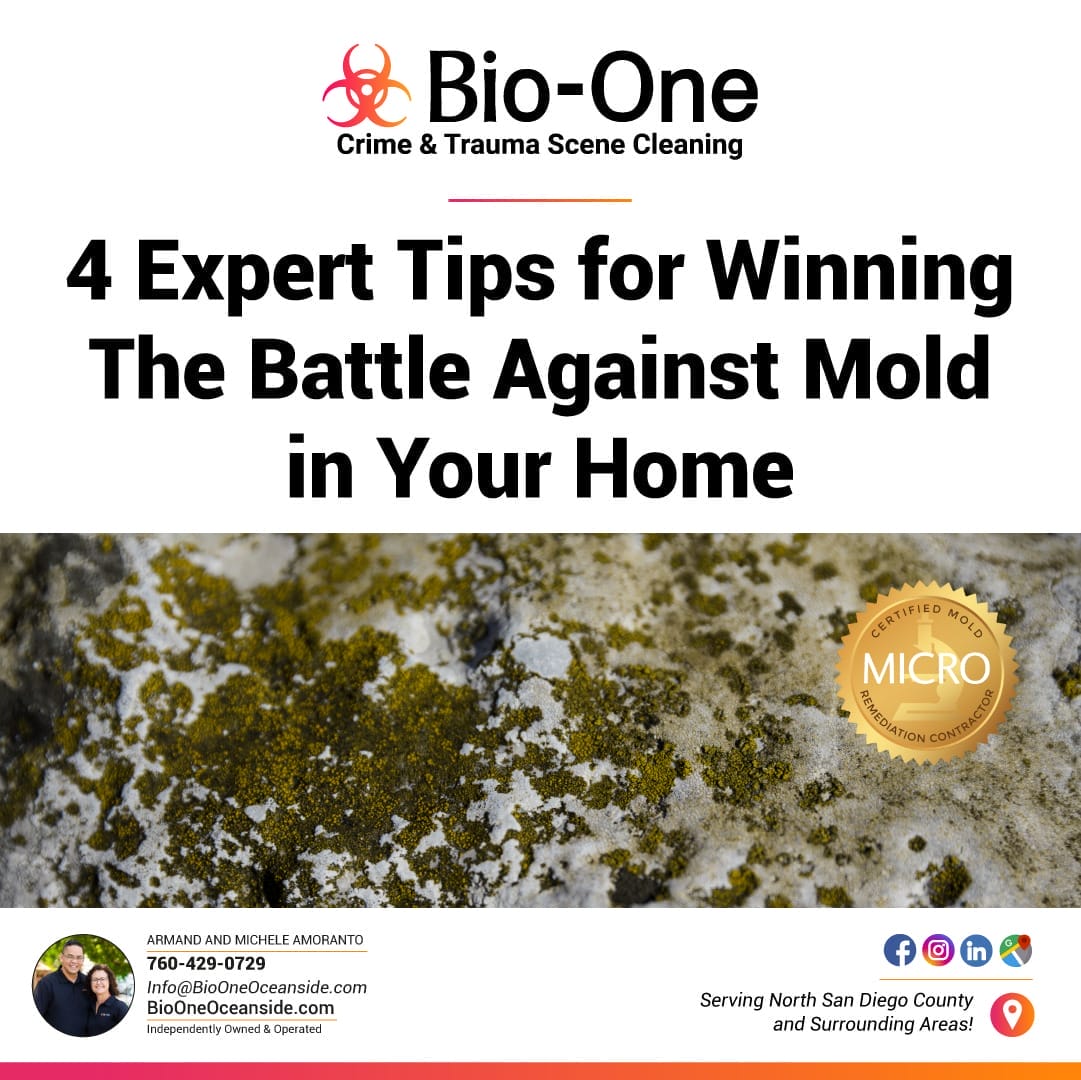
Mold is a common problem in many households, with as many as 50% of homes having some form of mold growth. Not only can it cause unsightly stains and odors, but it can also pose health risks to you and your family. As the rainy season approaches, it's important to be aware of the potential for mold. In this blog post, we will discuss the culprits behind mold growth, as well as some expert tips for winning the battle against mold in your home!
Mold is a type of fungus that thrives in warm and damp environments. While it may seem like a small issue, mold can quickly spread and cause all sorts of damage: structural damage, health problems, and it can even affect the value of your home. The presence of mold in your home is not only an indicator of a moisture problem but also a potential health hazard. Here are some common culprits behind mold growth:
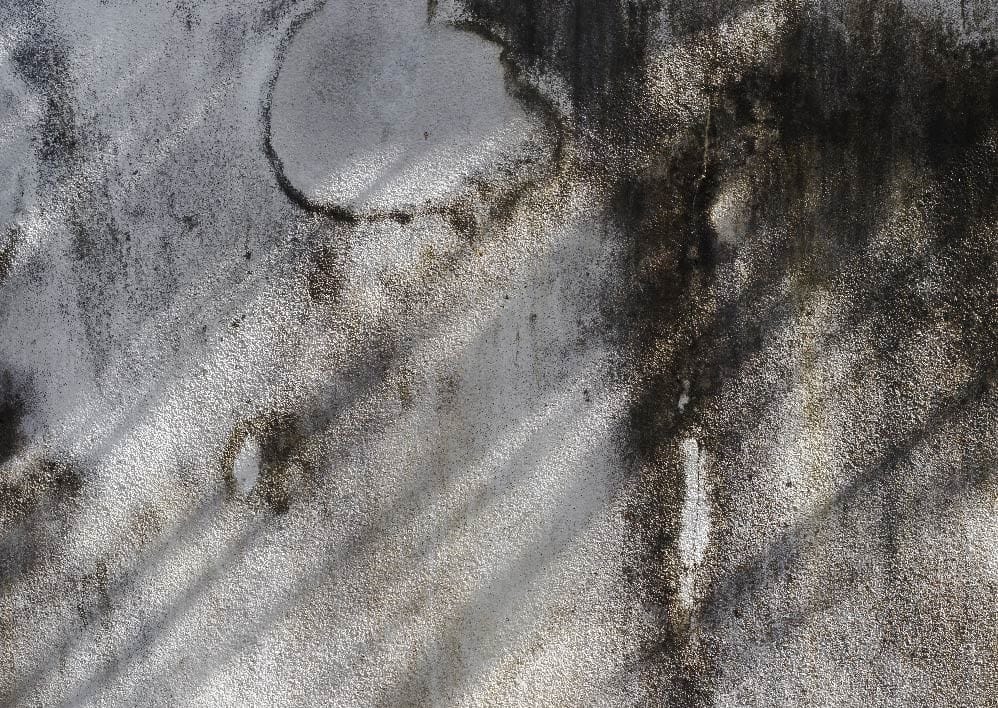
It's not only about cleaning up an existing mold problem but also taking necessary precautions to ensure it doesn't return. Winning the battle against mold in your home means creating an environment where mold simply cannot survive. Let's look at some comprehensive strategies that you can implement to safeguard your property from mold growth.
The most important step in preventing mold growth is keeping your home dry. Since moisture is the main culprit behind mold, it's essential to address any sources of water leakage or buildup immediately. Regularly check for leaking pipes, roofs, and cracks in your foundation that could lead to water seepage.
Also, be sure to keep a close eye on areas that are prone to condensation, such as bathrooms and kitchens. Wipe down any excess moisture on surfaces, and ensure proper ventilation in these spaces.
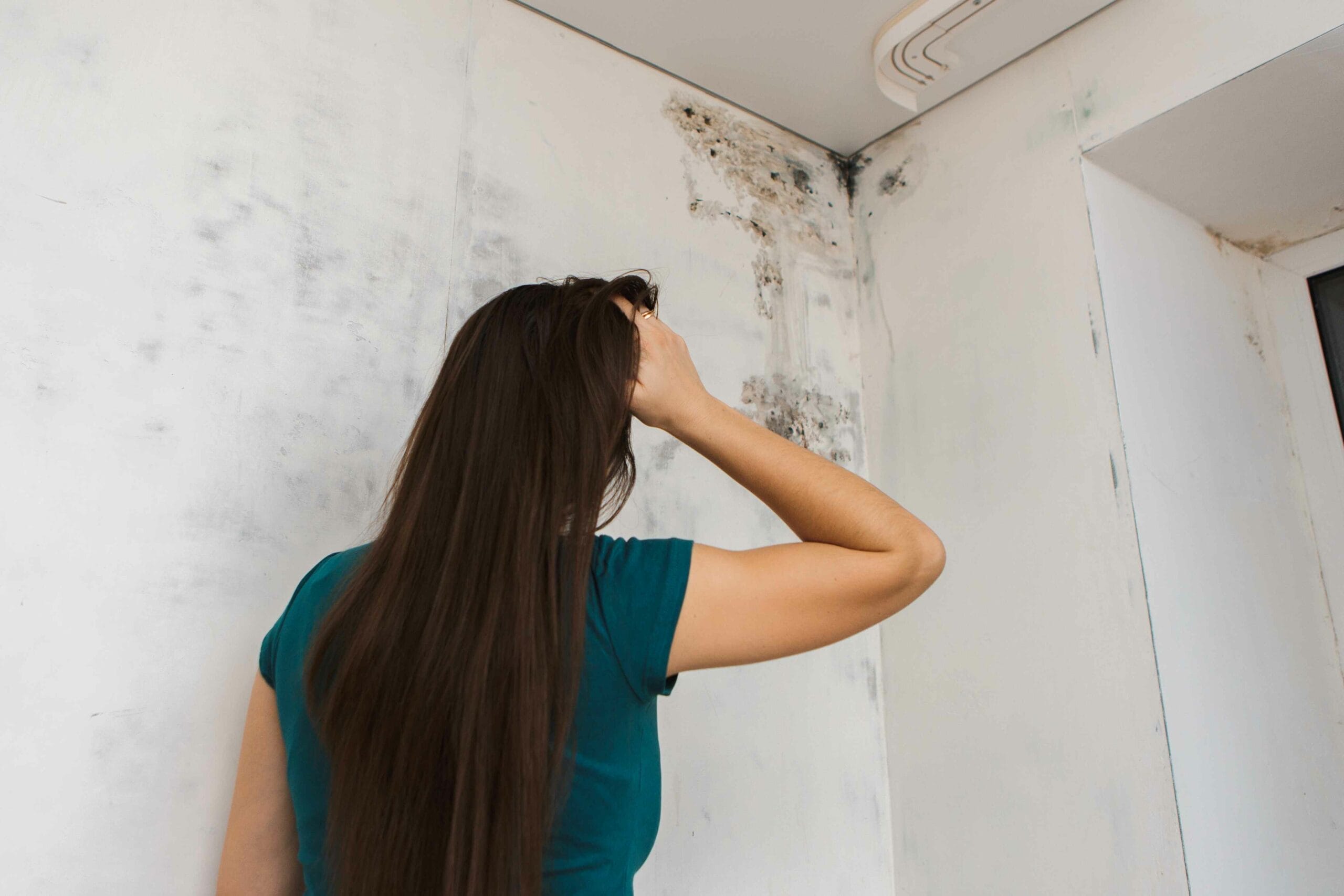
Mold thrives in high-humidity environments. Therefore, it's essential to keep the humidity levels in your home below 50%. You can use a hygrometer to monitor the humidity levels or invest in a dehumidifier to control them.
Learn more: Can You Clean Up Mold Yourself? Four Essential Pros and Cons
You always hear "Improve ventilation", and "Make sure your home has enough ventilation" - But, what does that mean? Ventilation is simply the circulation of air in and out of your home. Proper ventilation helps reduce moisture and keep indoor air quality fresh. Some effective ways to improve ventilation include:
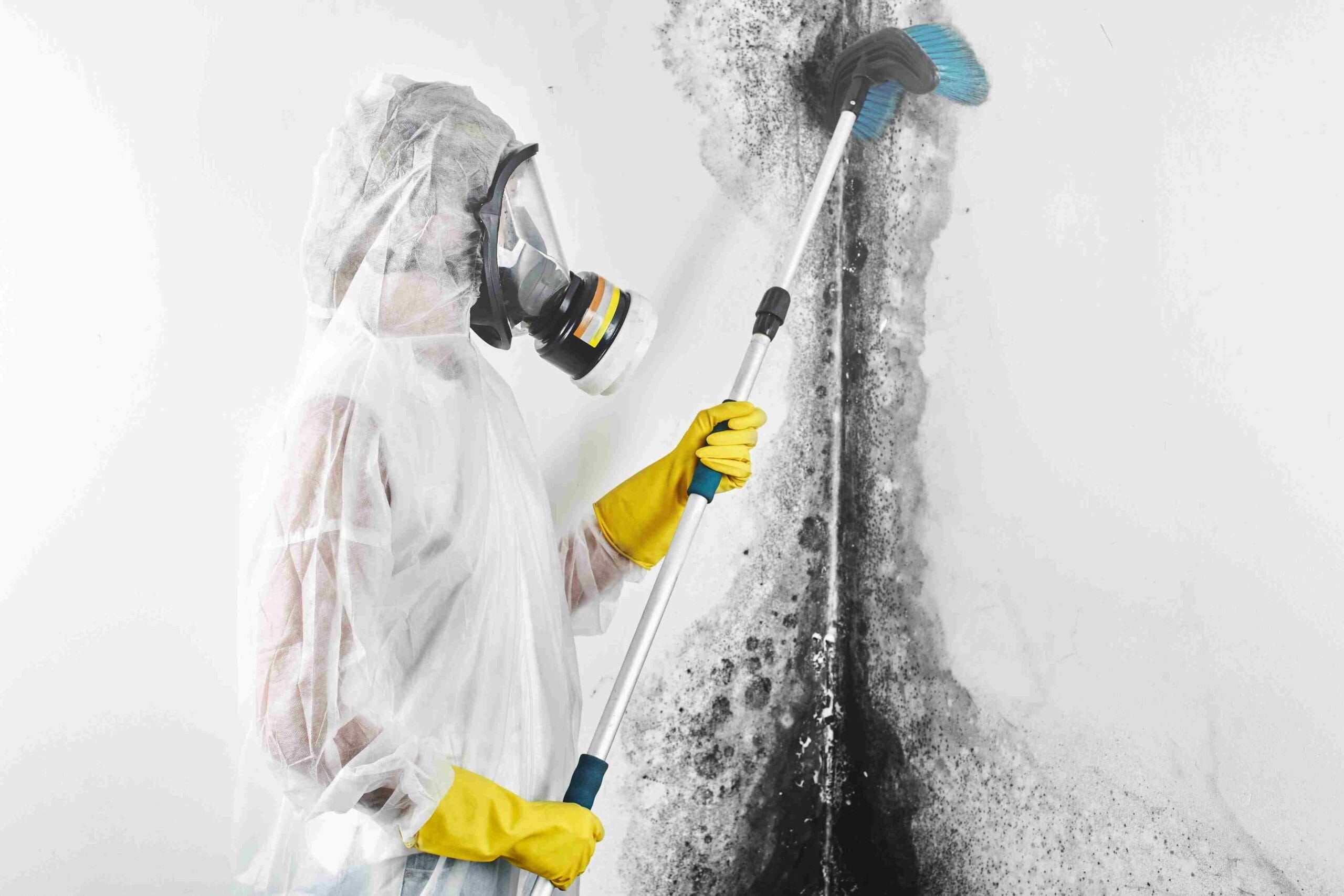
If you do find mold growing in your home, it's important to address the issue immediately. Wear protective gear, such as gloves and masks, and clean the affected area using a mixture of water and detergent. For larger areas or more severe cases, it's best to call a professional mold remediation service.
After cleaning, it's crucial to fix any sources of moisture and repair any damaged areas. This will prevent the mold from reappearing in the future.
You may like: Tips for Preventing Mold Growth Indoors: Key Areas to Tackle
Sometimes, mold can become a persistent issue despite your best efforts to prevent it. In these cases, the safest thing you can do is to seek professional help. Bio-One of Oceanside offers mold remediation services that can effectively eliminate any existing mold in your home and prevent its future growth.
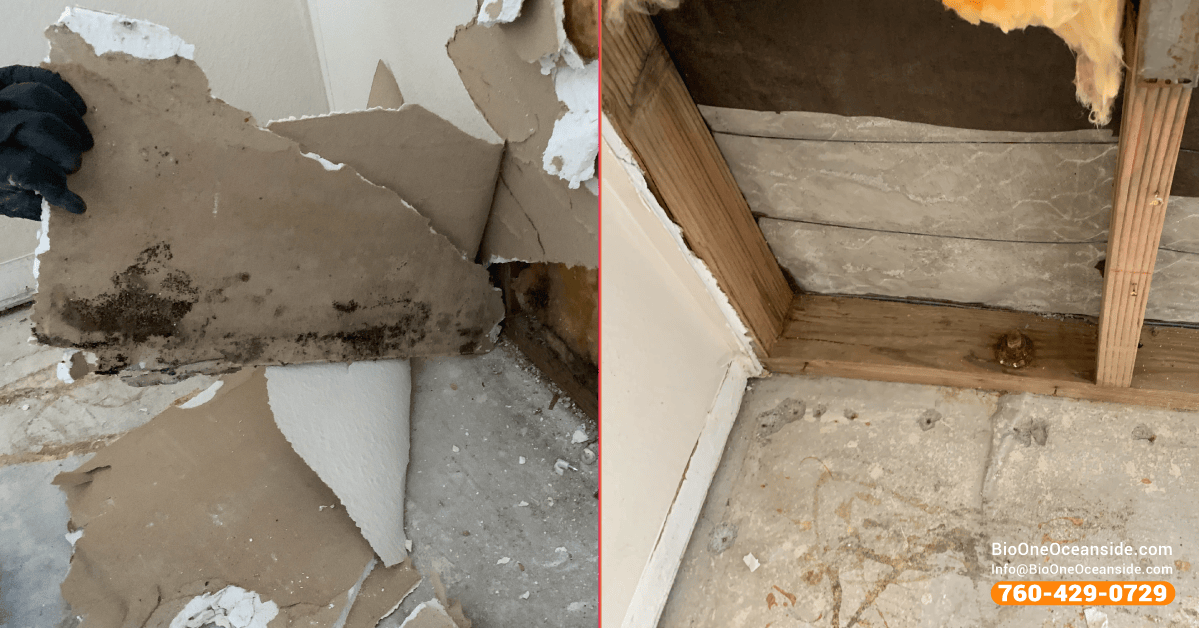
Our team uses industry-leading techniques and equipment to ensure a thorough and efficient remediation process. Don't let mold take over your home. Follow these tips to prevent its growth, and if you need assistance, don't hesitate to reach out to Bio-One for expert services. Keep your home healthy and safe from the dangers of mold!
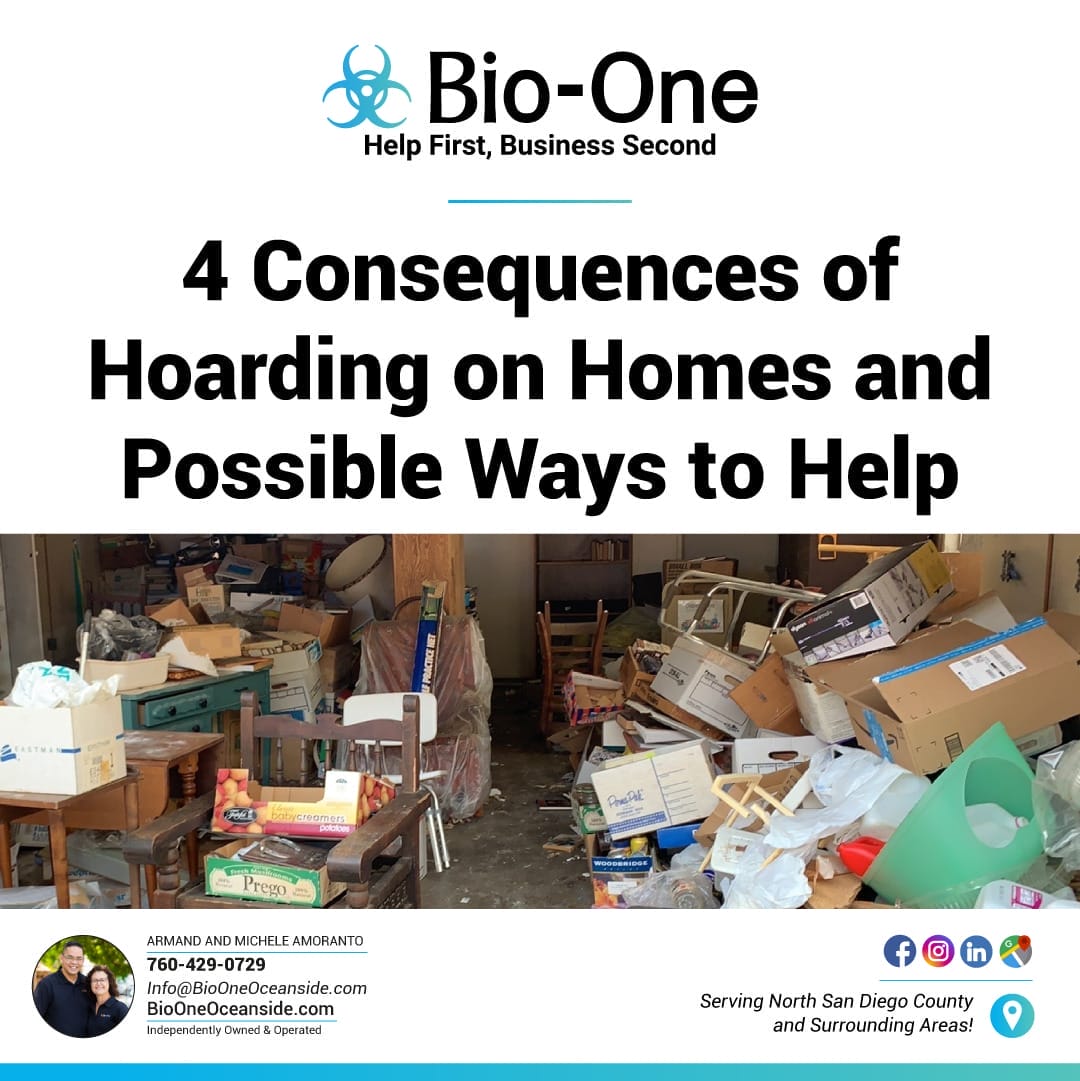
Hoarding, a mental disorder, is characterized by the persistent difficulty of discarding or parting with possessions, regardless of their actual value. This behavior can often result in the accumulation of an overwhelming amount of clutter in one's living space, causing serious problems for both the individual and their loved ones. Unfortunately, hoarding can also lead to several hazardous conditions in the home, such as fire hazards, falls, mold growth, squalor, pest infestations, and more. In this article, we'll delve into the four consequences of hoarding on homes and provide tips on how to remediate them.
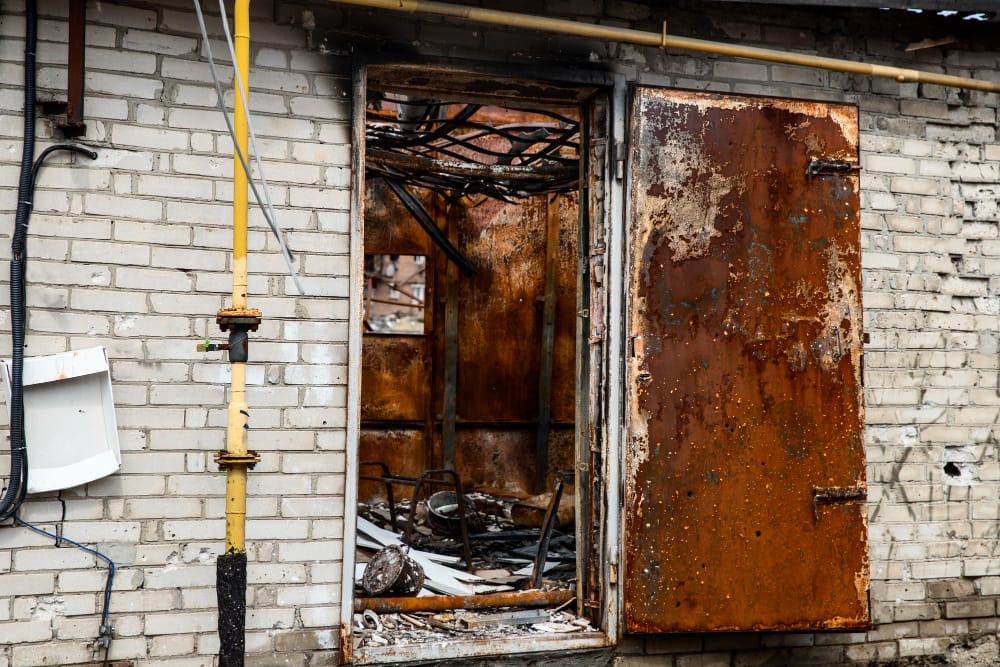
Formed by stockpiles of clutter blocking exits or heating equipment, fire hazards can also arise due to electrical wiring becoming excessively overloaded As outlets and wiring are covered and hidden by hoarded items, electrical fires are common. In addition to keeping exit routes clear, it is also essential to have working smoke alarms throughout the home.
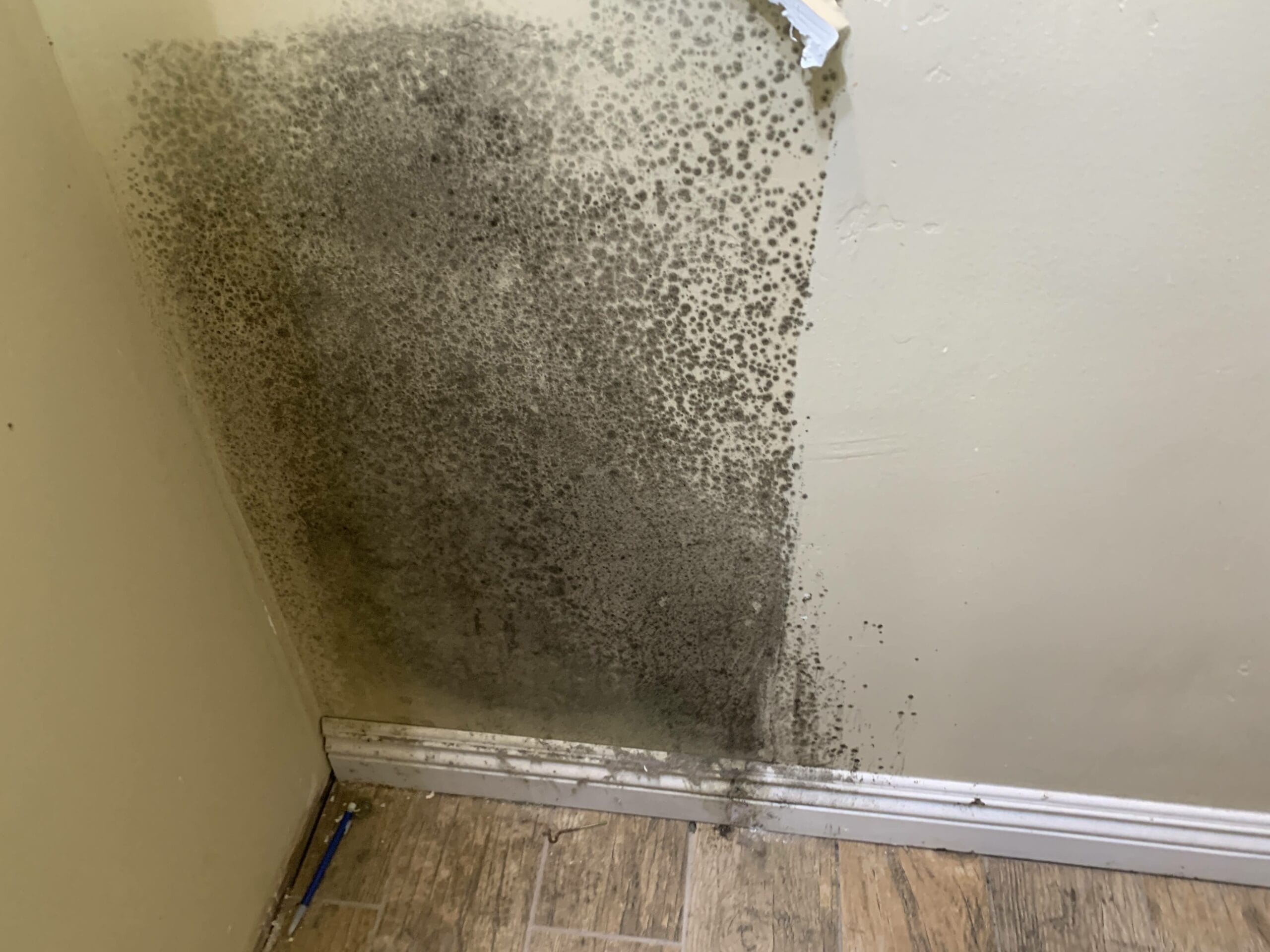
Excess moisture can get trapped in hoarded items, leading to mold development. Mold exposure can cause allergies, respiratory issues, and other health problems. Additionally, as the home is not cleaned regularly, chances are that mold spores spread through all the areas of the home, which may result in severe mold infestations. To prevent mold growth, it is crucial to regularly clean and declutter the home, especially in areas prone to moisture.
Tripping hazards are a common cause of falls in hoarded homes. High piles of clutter, lack of a clear path, or obstructed stairways can all lead to serious injuries. There comes a point where clutter becomes unmanageable and can be hazardous, especially for older adults or those with mobility issues.
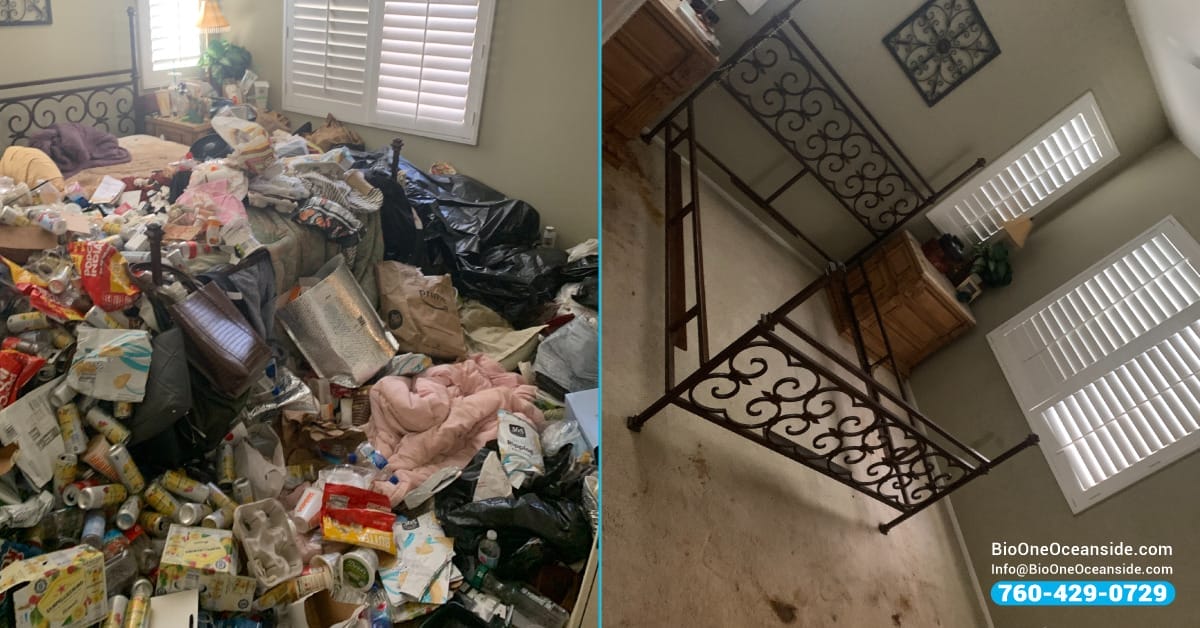
The first step in assessing a hoarded home is to remove any potential tripping hazards. This may involve clearing pathways, removing clutter, and fixing any loose or broken flooring. It's also important to ensure that all stairways are clear and well-lit.
Hoarding provides ideal conditions for pests and rodents to thrive. Clutter creates hiding spots, food sources, and nesting grounds for these unwanted guests. Pests and rodents can carry diseases, cause property damage, and worsen existing health conditions.
In a hoarded home, rodents can spread through crawl spaces, vents, and cracks in the walls. It's crucial to address any potential entry points and regularly clean and declutter to prevent pest infestations.
The consequences of hoarding are not just in the physical and mental health aspect. Over time, clutter and neglect can cause structural damage to a home, making it unsafe for inhabitants. The weight of piles of clutter can weaken floors and walls, causing them to sag or even collapse. Hoarded items can also block ventilation systems and cause mold growth, which can further contribute to the deterioration of a property.
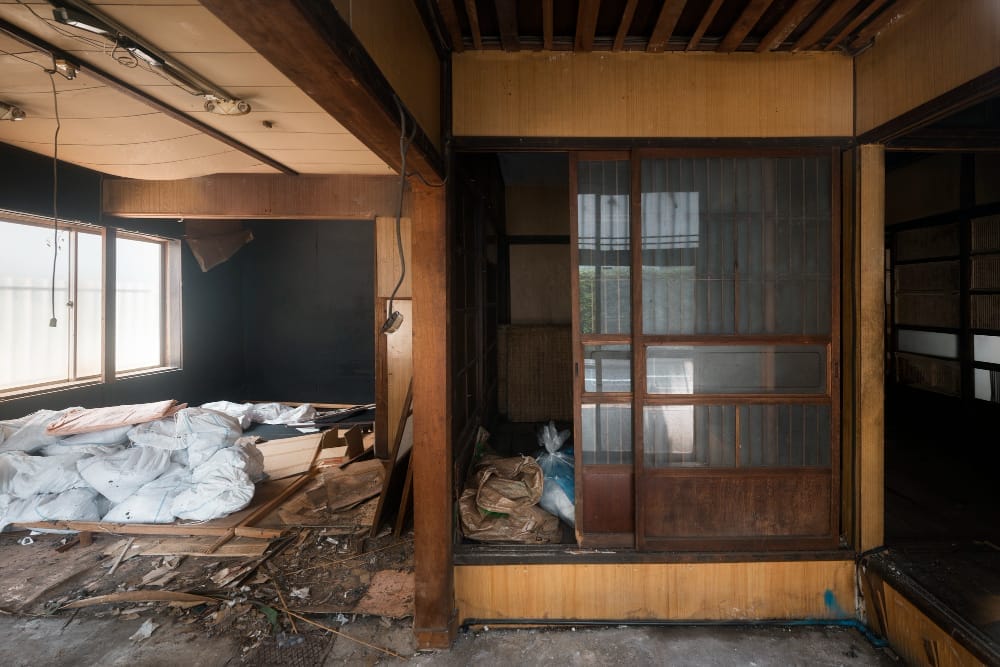
Additionally, hoarding often leads to neglect and lack of maintenance in a home. This can result in plumbing issues, electrical problems, and other household hazards. These issues not only make the living conditions unsafe but also decrease the value of the property.
Hoarding Disorder requires specialized treatment. Some possible options for treating hoarding include therapy, medication, and support groups.

Cognitive-behavioral therapy (CBT) is effective in helping individuals with Hoarding Disorder. This type of therapy helps individuals understand the thoughts and behaviors driving their hoarding tendencies and teaches them healthy coping mechanisms to manage their symptoms.
Medications such as selective serotonin reuptake inhibitors (SSRIs) may also be prescribed in conjunction with therapy to help alleviate symptoms of anxiety and depression often associated with Hoarding Disorder.
Support groups, such as those offered by organizations like the International OCD Foundation, can provide a sense of community and understanding for those struggling with Hoarding Disorder. These groups offer a safe space for individuals to share their experiences and learn from others going through similar challenges.
Disclaimer: The information provided in this blog post is intended to be educational and should not be considered professional medical advice. We are not mental health professionals. While we strive to provide accurate and up-to-date information about treatment options for Hoarding Disorder, we strongly recommend that individuals seeking help for hoarding or any other mental health concerns consult with a qualified mental health professional.
Hoarding can have dangerous consequences for a home. In addition to the hazards outlined above, hoarders can also develop lifestyle and emotional problems. However, with the right mindset and the right tools, it's possible to tackle hoarding and mitigate the danger it poses to living spaces.
In extreme cases where hoarding presents an immediate health risk, consider contacting professionals like our team at Bio-One of Oceanside. We specialize in hazardous waste disposal, complete cleaning, and restoration of hoarded homes. Don't hesitate to contact us if you or a loved one is struggling with hoarding.
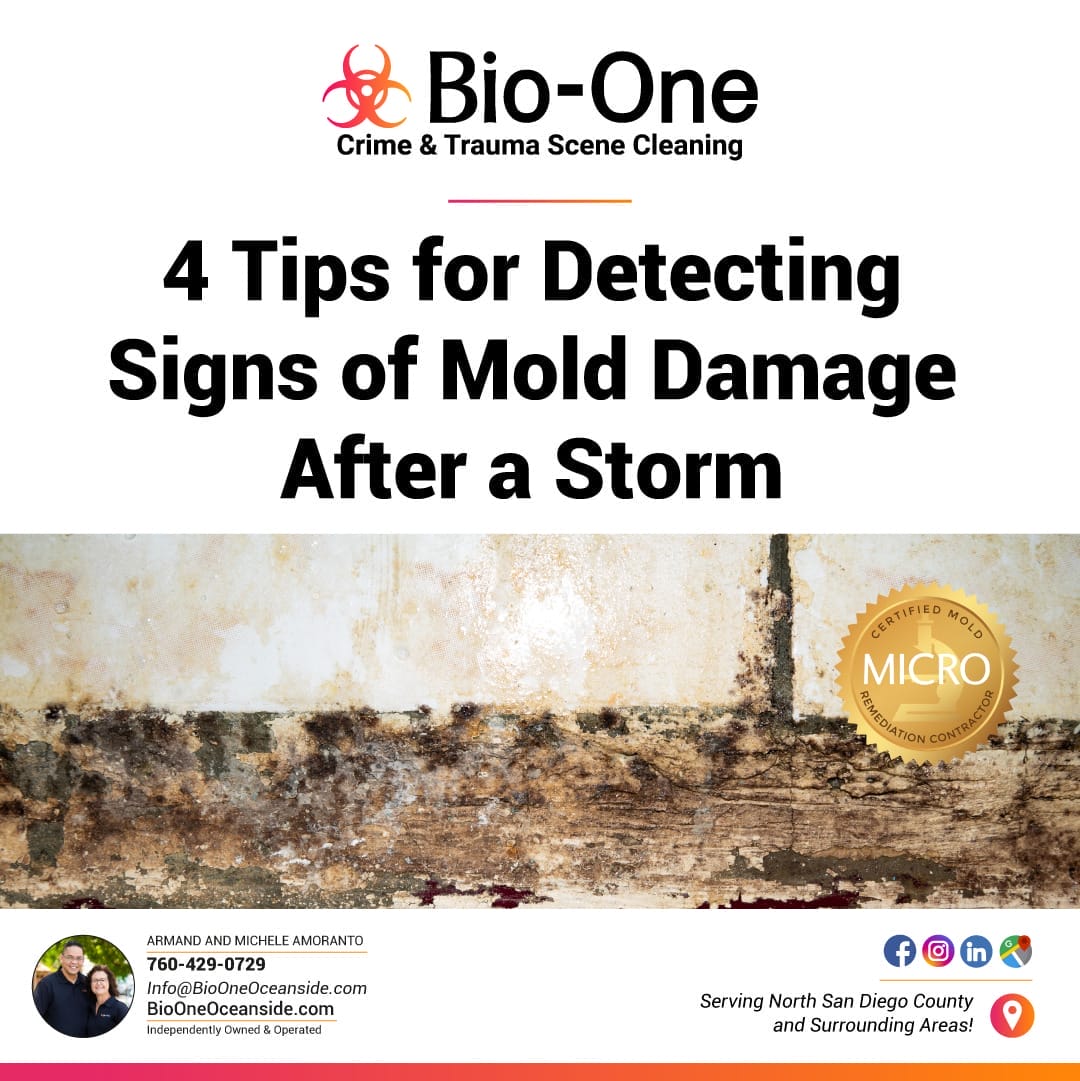
The aftermath of a storm or heavy rain can leave behind damp areas that are ideal for mold growth. It is important to detect the signs of mold growing indoors to prevent it from spreading and causing trouble. In this blog, we will provide you with 4 tips on how to detect the signs of mold growth and how to tackle it. We will also discuss the hazards associated with mold exposure, and why you should trust a professional mold remediation company like Bio-One of Oceanside to restore areas impacted by mold, mildew, and water damage.
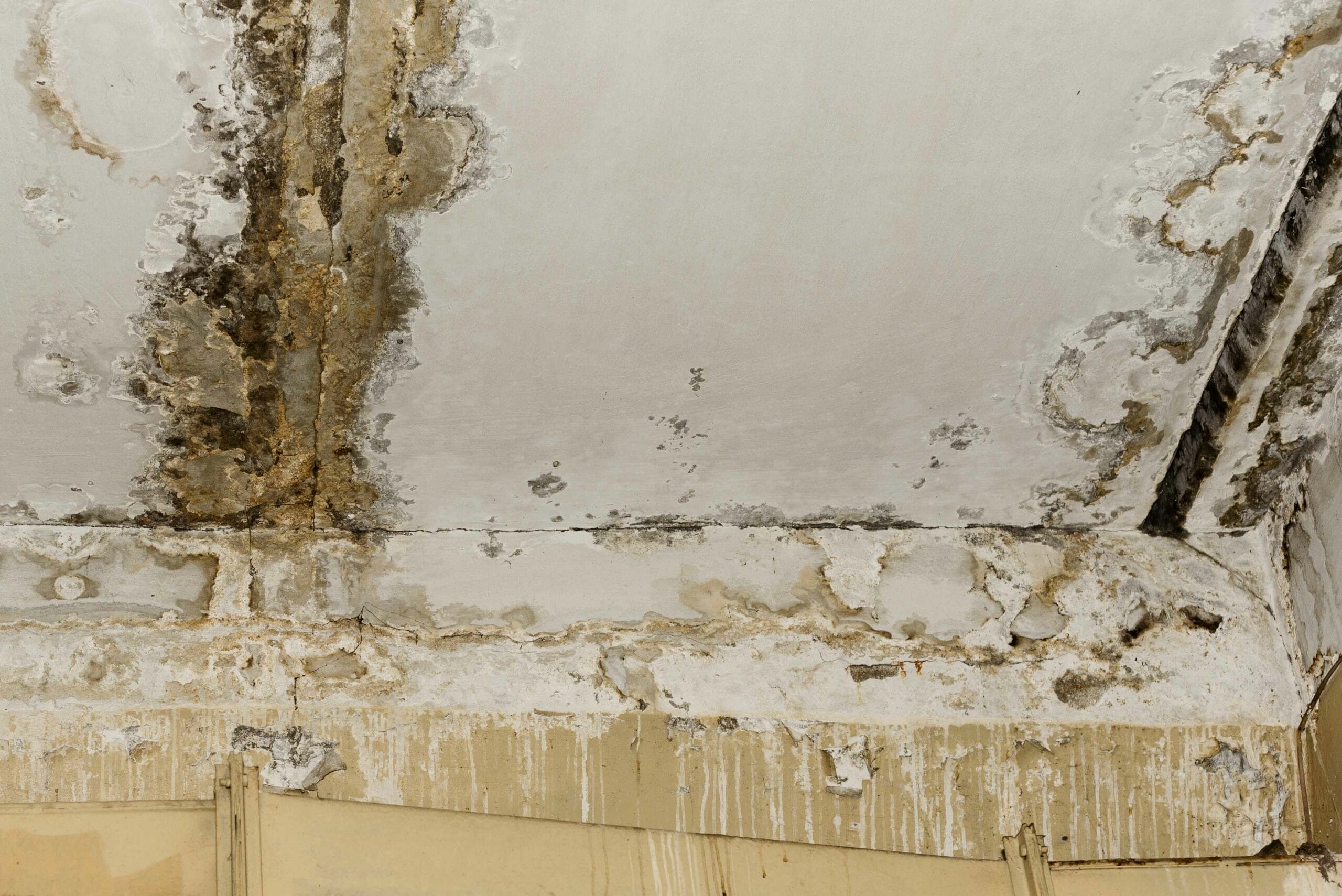
The most obvious sign of mold damage after a storm is if you can visually see it on surfaces such as walls, ceilings, or floors. Mold often forms in moist areas, so start by checking areas such as bathrooms, basements, and even kitchens. Remember that mold doesn't always appear black or green in color. It can also appear yellow, pink, or even white.
Be sure to inspect the areas where the rain got the heaviest or where there was significant flooding.
Mold has a distinct musty odor, so even if you can't see any visible signs, you can still detect mold by the smell. Mold spores usually emit a pungent musty odor that can be unpleasant. If you detect a strong, musty smell in a specific area, it's a sign that mold might be present.
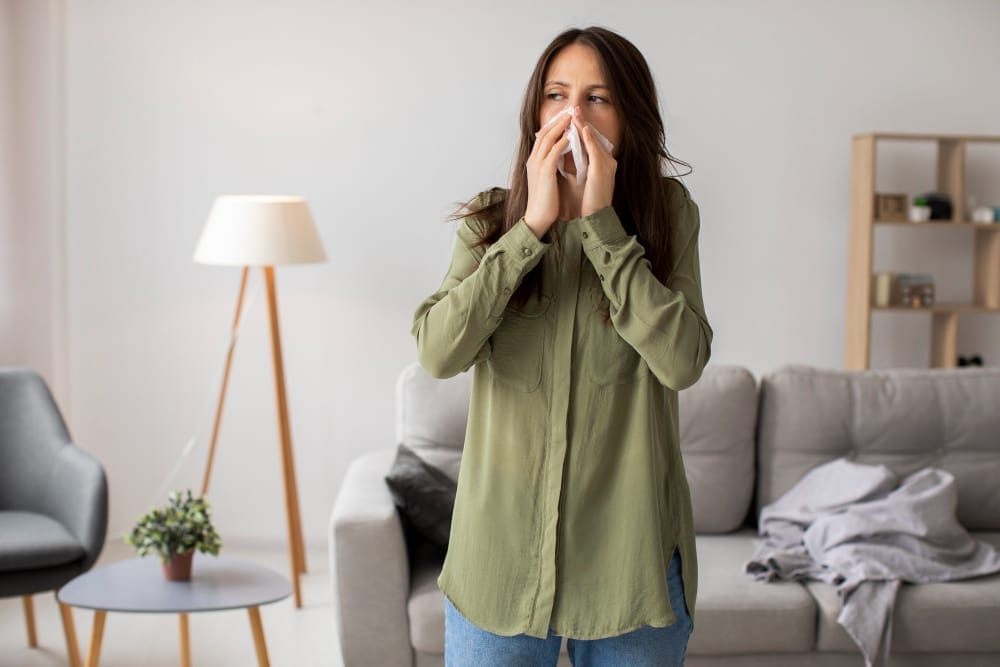
Among the strongest, most characteristic musty odors is the scent of washed and dried paper. This smell will be present even if mold isn't visible on the surface. So, if you experience this odor in your home or business after a storm, it's best to have an inspection done immediately.
Water damage is a significant factor that can contribute to the dissemination of mold. After a storm, it's important to keep an eye out for water damage. It can lead to damp areas in your home that can be ideal for mold growth. Signs of water damage may include:
If you notice water damage, take immediate action by calling a professional before the area grows.
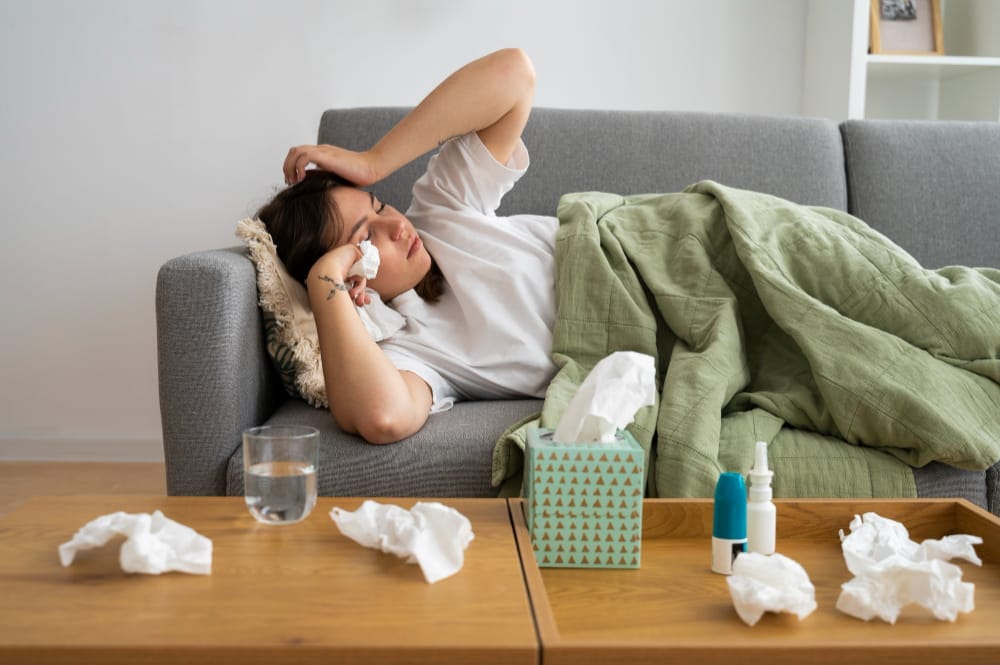
Many people underestimate the dangers of mold exposure. Symptoms of mold exposure can range from mild allergies to more severe respiratory problems. If you or any of your family members start experiencing unexplained symptoms such as coughing, wheezing, or sneezing, it's important to contact a professional to identify if mold is the cause.
Black mold, particularly, can be extremely harmful to your health if left untreated. Additionally, make sure to monitor your indoor air quality regularly. High levels of mold spores in the air can lead to health issues, so investing in an air purifier or regular ventilation can help prevent mold growth and keep you healthy.
Mold growth after a storm can be harmful to your health and cause great damage to your home. Stay vigilant in detecting signs of mold growth early to prevent it from spreading. If you suspect mold is present, contact a professional mold remediation company like Bio-One of Oceanside to restore areas impacted by mold and water damage.
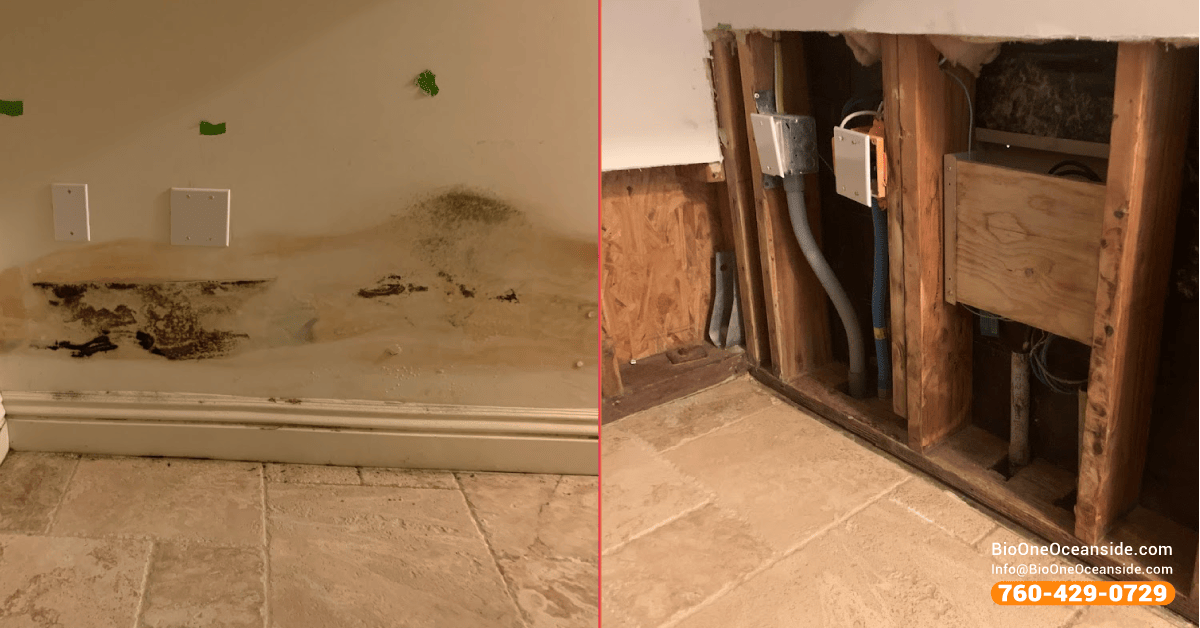
With these 4 tips in mind, you can detect and tackle the problem before it causes any harm. Remember, we are micro-certified mold remediation contractors, and are here to help!

Hoarding affects millions of people worldwide, from all walks of life. It's a condition where individuals feel the need to accumulate and save things, even if they hold little to no value. Unfortunately, many individuals who struggle with hoarding may also experience other mental health conditions that exacerbate their symptoms. In this post, we’ll explore four links between hoarding and mental health, and offer some ways to help someone who is struggling.
Disclaimer: The information provided in this post is intended to create awareness about the relationship between hoarding and mental health. It is not intended as professional medical or psychological advice. We are not mental health professionals. If you, a family member, or a friend are struggling with hoarding or any other mental health condition, we strongly recommend seeking professional help.
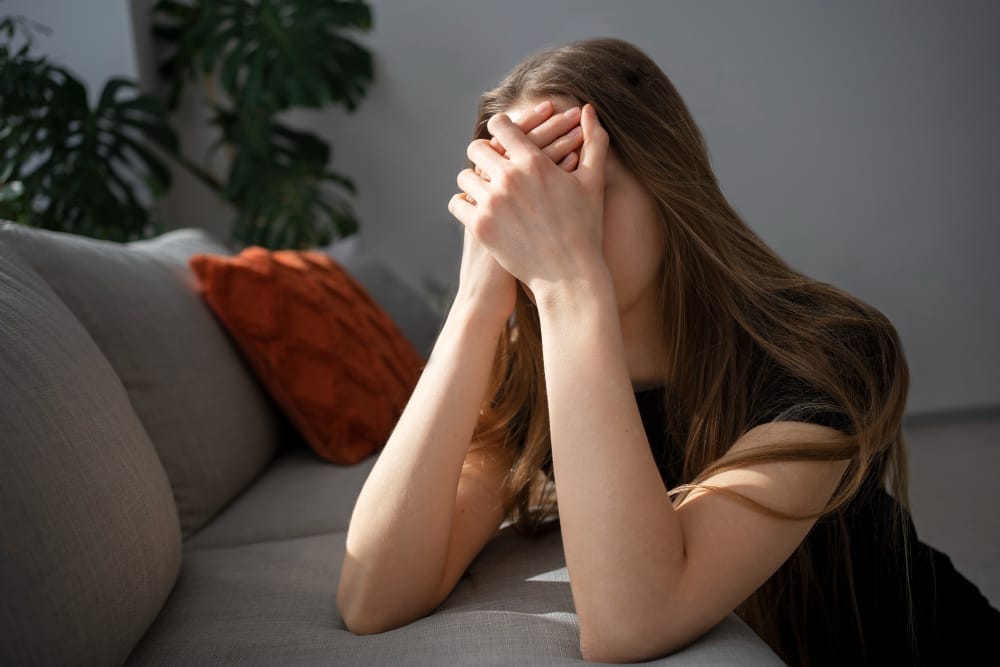
Hoarding is often related to depression and anxiety disorders. People who struggle with hoarding may experience anxiety when faced with the prospect of throwing away their possessions, leading to greater feelings of sadness and hopelessness. In many cases, these individuals may also suffer from depression, which can further exacerbate their symptoms.
If you suspect that a loved one is struggling with depression or anxiety in addition to their Hoarding Disorder, a mental health professional can offer them effective treatment options and provide the support they need to heal.
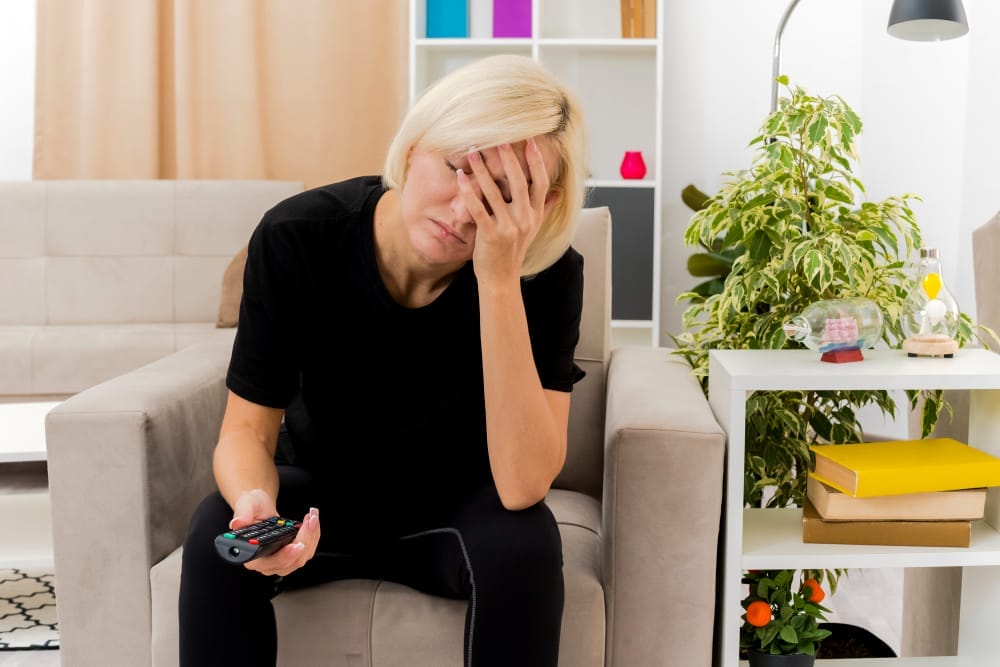
Hoarding Disorder is sometimes linked to obsessive-compulsive Disorder or OCD. People with OCD experience frequent and intense impulses to perform certain compulsive behaviors, such as washing their hands, organizing their possessions, or checking doors and windows. In some cases, hoarding may be a manifestation of these compulsive impulses.
If a loved one is struggling with OCD and hoarding, there are ways to connect and treat these conditions. Techniques such as cognitive-behavioral therapy (CBT) and Exposure and Response Prevention (ERP) can help break the cycle of obsessions and compulsions and ease the symptoms of hoarding behaviors.
Attention-deficit/hyperactivity disorder (ADHD) is another mental health condition that is sometimes linked to hoarding. People with ADHD often struggle with executive functioning skills such as time management, organizing, and decision-making. These challenges can make it difficult for them to maintain an organized living environment, leading to feelings of overwhelm and an increased likelihood of hoarding.
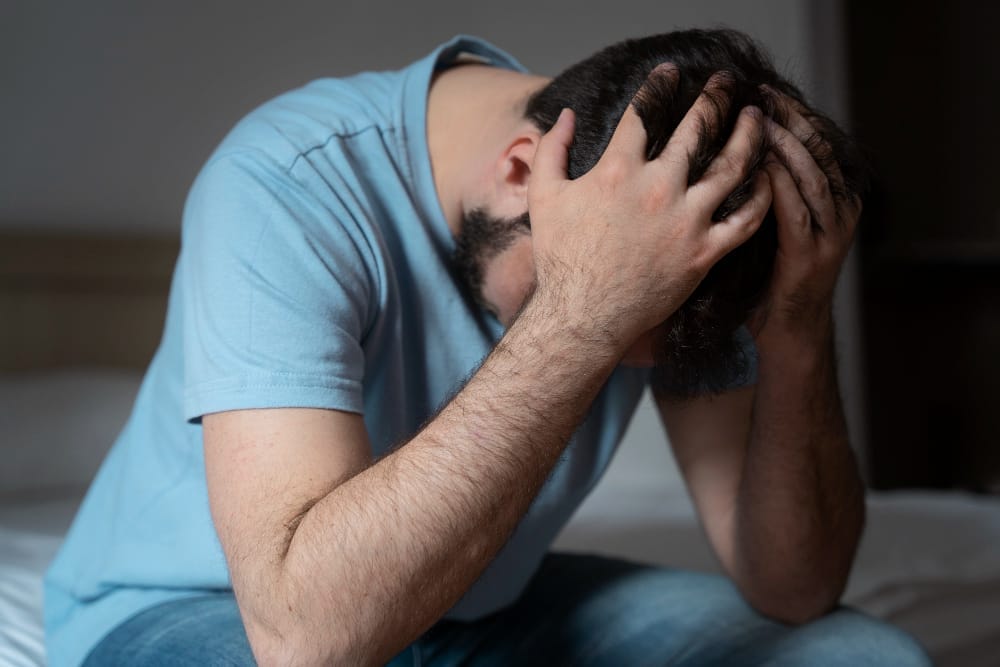
If a loved one is struggling with ADHD and hoarding, consider working with a professional organizer who has experience working with people with ADHD. They can help your loved one develop the skills they need to organize their possessions and maintain a clutter-free living space.
Hoarding is sometimes linked to trauma and post-traumatic stress disorder (PTSD). People who have experienced trauma may struggle to let go of possessions that hold emotional significance, leading to an accumulation of clutter over time. For individuals with PTSD, hoarding may be a coping mechanism for dealing with feelings of anxiety and emotional distress.
If a loved one is struggling with trauma, therapy and medication can be effective in managing symptoms of PTSD, which can help your loved one feel more in control of their hoarding tendencies.

Hoarding can be a challenging condition to manage, but there are ways to help someone who is struggling. By understanding the links between hoarding and other mental health conditions, you can choose the most effective treatment approaches and provide the support your loved one needs to heal.
Remember to approach the issue with compassion and empathy, and encourage your loved one to seek help from a mental health professional experienced in treating hoarding. Additionally, Bio-One of Oceanside offers discreet hoarding cleanup services. Don't hesitate to reach out to us for support in helping your loved one on their journey towards a clutter-free and healthy home.
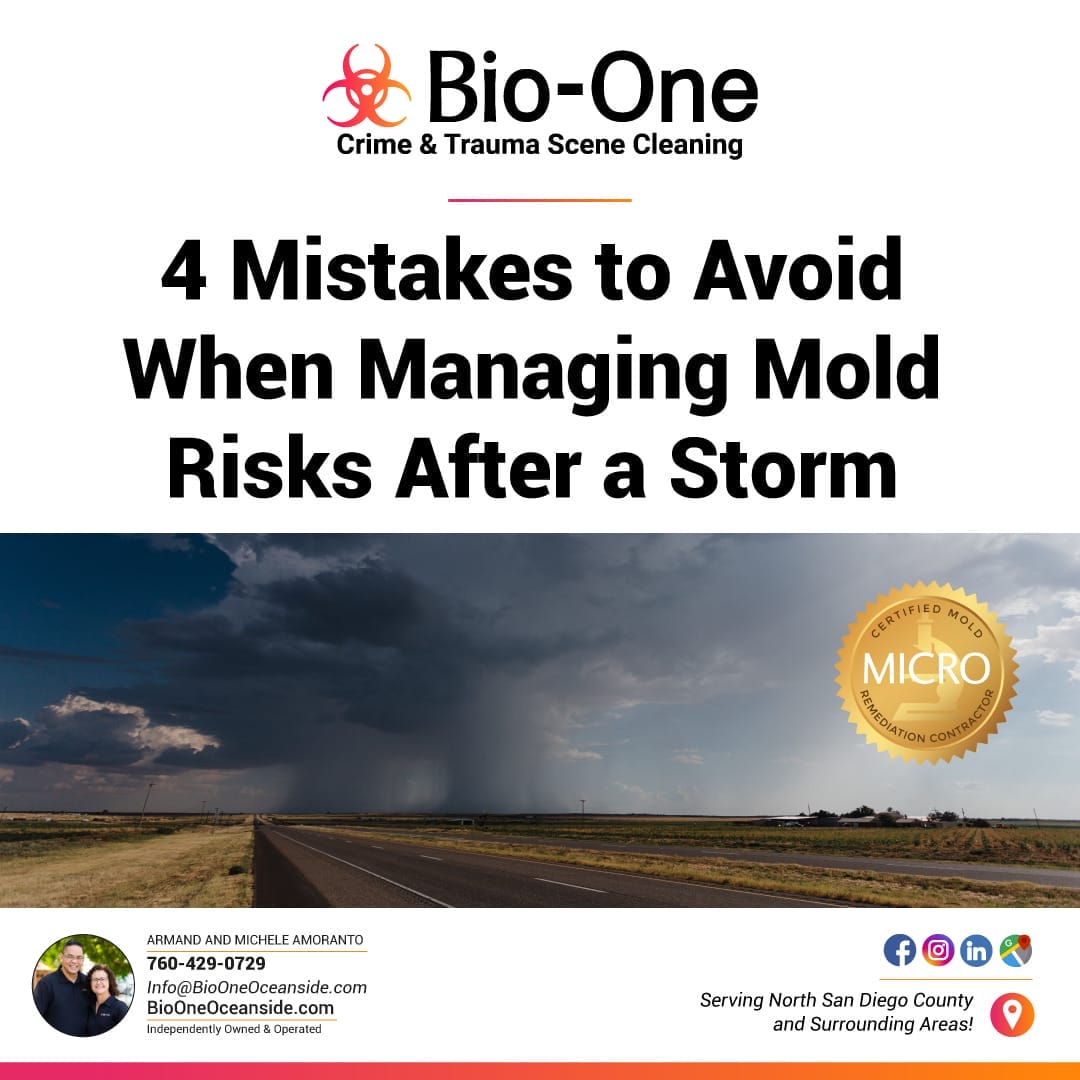
A powerful storm can cause significant damage to our homes and properties. As reports of 'El Niño' winters are back, we need to understand the potential risks that come after a storm has passed. It's important not to overlook the potential growth of mold. Excess moisture from a storm can create the perfect environment for mold to thrive, leading to serious health issues and further property damage. In this blog, we will discuss four common mistakes to avoid when managing mold risks after a storm so that you can protect your home and family.
If you're dealing with a mold emergency on your property, our remediation technicians at Bio-One of Oceanside are ready to help.

After a storm, it's common to see water damage on walls, floors, or ceilings. But what may not be so obvious is the presence of mold. It can grow on many surfaces, including roofs, windows, and walls. If left unattended, it can cause damage to these structures, leading to costly repairs or replacements.
It's important to thoroughly inspect these areas for any signs of mold growth, such as a musty smell or visible spots. Ignoring these signs can lead to further damage and potential health hazards.
Mold needs moisture to grow, so it's crucial to address any sources of excess moisture in your home after a storm. This could include leaky roofs, broken pipes, or even high humidity levels. Fixing these issues and keeping your home well-ventilated can help prevent mold damage.
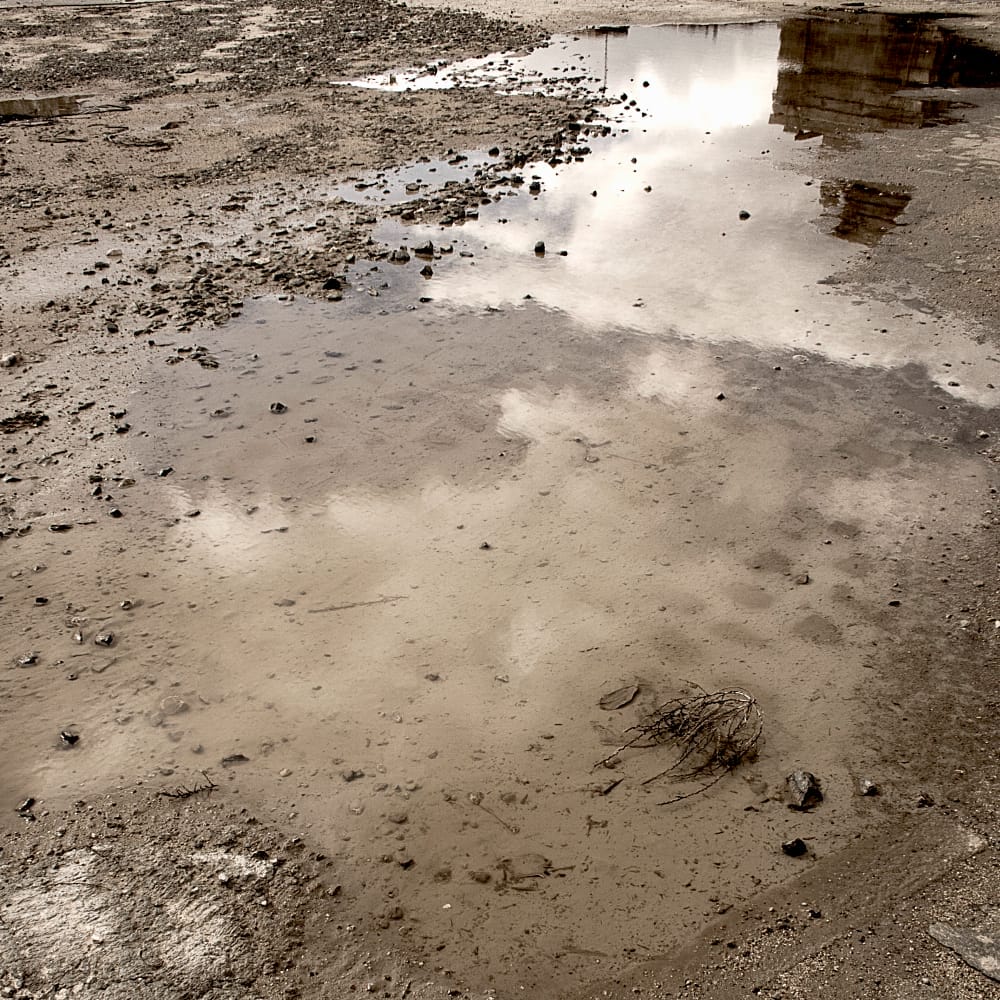
If heavy rain or flooding causes excess moisture, you must remove any standing water as soon as possible. Use a wet/dry vacuum or call a professional water damage restoration service for help. Additionally, thoroughly dry out any affected areas and consider using a dehumidifier to reduce humidity levels.
Simply wiping away visible mold is not enough to fully remove it from your home. In fact, this can often spread the spores and make the problem worse! Use proper cleaning methods and products specifically designed to remove mold. If the affected area is larger than 10 square feet, it's best to hire a professional mold remediation service.
Many people believe that using bleach will kill and remove mold, but this is not always the case. While bleach can temporarily make mold less visible, it does not actually remove the roots of the mold or address any underlying issues that may be causing its growth.
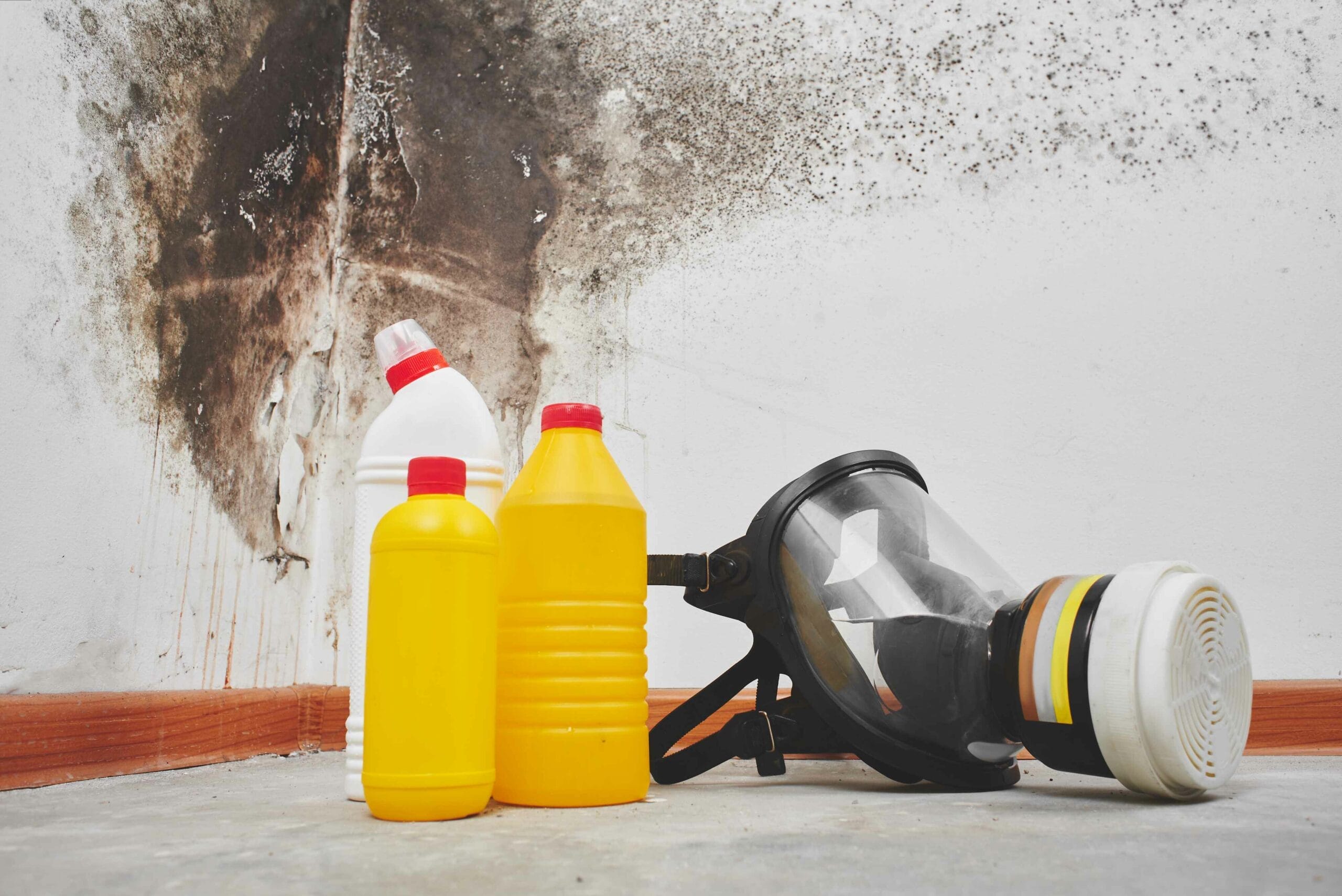
Instead of using bleach, consider using natural cleaners such as vinegar or hydrogen peroxide. These can be just as effective at killing mold without the harsh chemicals. This will depend, of course, on the extent of damage. Be sure to properly ventilate the area while cleaning and wear protective gear such as gloves and a mask.
Mold can begin growing within 24-48 hours after a storm or a water-related event, so time is of the essence when it comes to managing mold risks. Waiting too long to address the issue can lead to further growth and potential health hazards. When it comes to managing mold after a storm, a swift response is required.
If you experience flooding or water damage in your home, here are the steps you should take immediately:
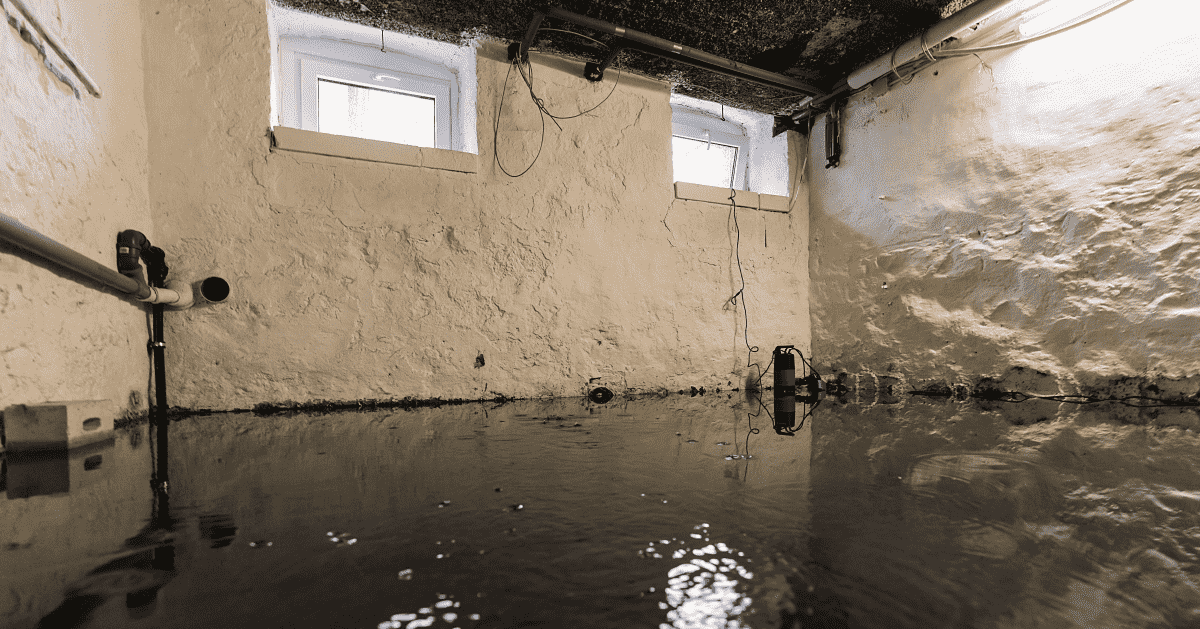
After a storm, be sure to check your home for any signs of potential mold growth, such as damp or musty odors. These can be indicators that there is hidden mold growing in areas that are not easily visible.
Overall, mold after a storm can be a common and potentially dangerous issue for homeowners. Take preventative measures and act promptly if mold is discovered in your home. By avoiding these common mistakes, you can effectively manage mold risks and keep your home safe for you and your family. Remember to use the right cleaning products when handling mold and consider seeking professional assistance for proper remediation.
Bio-One of Oceanside is here to help with all of your mold remediation needs. Our trained professionals have the necessary equipment and expertise to safely and effectively remove mold, giving you peace of mind during and after the storm season. Contact us today to learn more about our services and how we can help protect your home!

Are you bothered by mold and pest problems in your home? Do you find it difficult to handle these issues and make your home a safer and healthier living space? If yes, then this blog post is for you. Mold and pest problems can cause severe damage to your property, as well as pose a risk to your health. Therefore it is essential to address these issues as soon as possible. In this blog post, we will share four tips for those tackling mold and pest issues in the home.
The first step in tackling mold and pest issues is to identify and determine the cause of the problem. Mold and pests can thrive in damp or moist areas, so start by checking for any water leaks, condensation, or areas with high humidity. Look for signs of mold such as discoloration, musty odor, or peeling paint. Pest infestations can be identified by finding droppings, damage to property, or spotting the pests themselves. Once you have identified the problem, you can move forward with the necessary repairs and treatments to restore the property.

Cleaning and disinfecting affected areas is crucial in eliminating mold and pest problems. Here are some tips for cleaning and disinfecting mold:
For pest infestations, we recommend the following:

Eliminating mold and pests can be a temporary fix if you do not address the root cause of the problem. For example, if you have a leaky roof or pipe, fix it to prevent the growth of mold. If there are gaps in your home that allow pests to enter, seal them up, or use pest control measures.
If you don't fix the root cause of mold and pest issues, you won't be able to prevent recurrence.
Some mold and pest infestations may require the expertise of a professional. Mold infestations can be severe and pose a health risk, and pest infestations can damage your property and pose a risk to your health. In such situations, it is best to call in a professional who has the knowledge and experience to address the problem thoroughly.
Mold and pest problems can be challenging to handle, whether you are a homeowner, business owner, or property manager. However, identifying the problem, cleaning and disinfecting affected areas, addressing the root cause of the problem, and seeking professional help when required, can go a long way in resolving these issues.
At Bio-One of Oceanside, we specialize in mold and remediation services and can help you restore your home or business. Our team is trained and equipped with the necessary tools to handle any mold or pest infestation effectively! Don't let mold and pests take over your home, take action today, and make your living space a healthier and safer one.

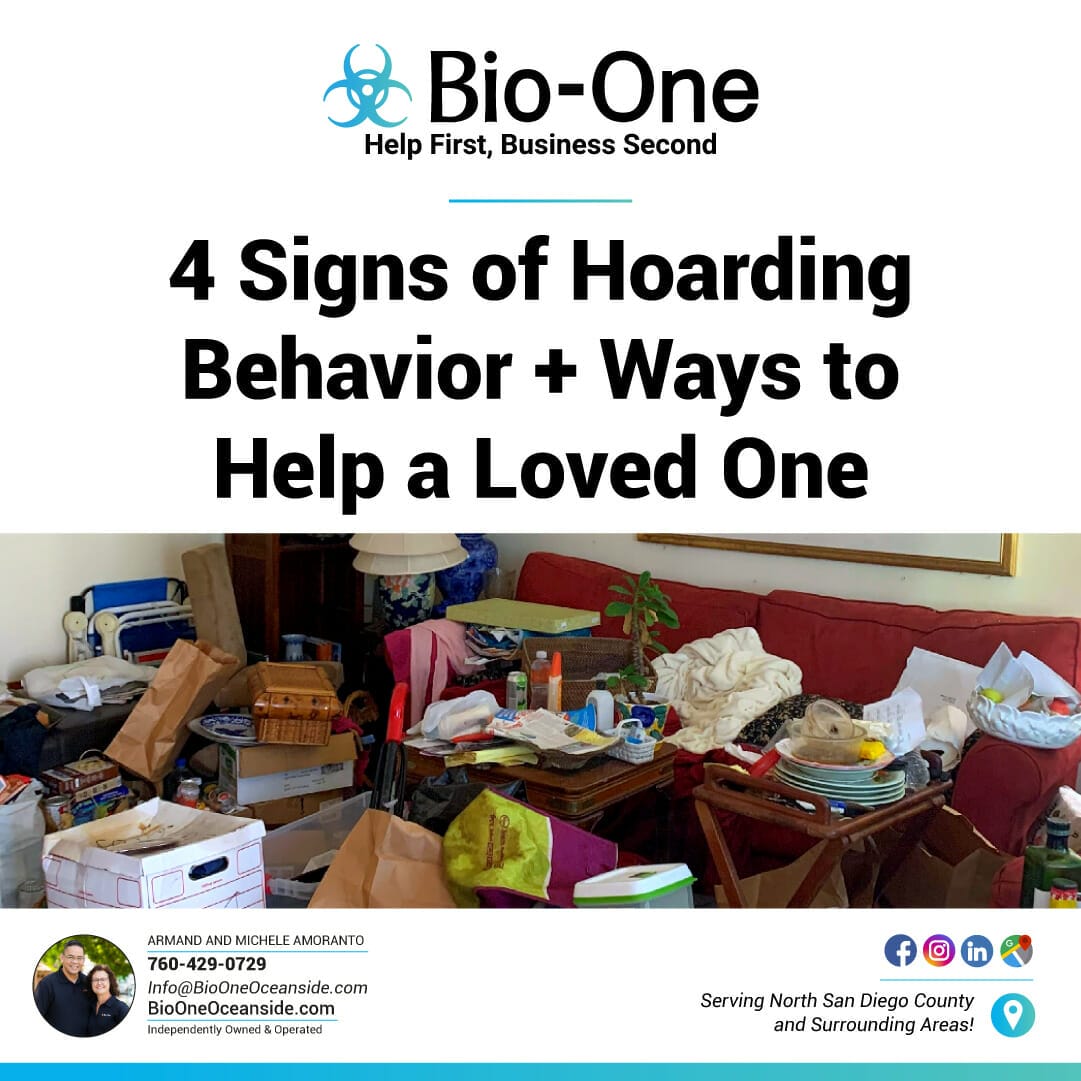
We all love to collect possessions that are special to us, but there is a fine line between accumulating and hoarding. While not everyone is aware of the signs of hoarding behavior, it actually affects people from all walks of life. The condition is often associated with Obsessive-compulsive Disorder, but it can also be a standalone issue, as they often feel deeply attached to their possessions, to the point where they may struggle to part with anything.
While this behavior may seem harmless, it can quickly spiral out of control, leading to dangerous living conditions, mental health issues, and physical harm. In this blog post, we'll explore the top four signs of hoarding behavior and share ways to help your loved one overcome this condition.
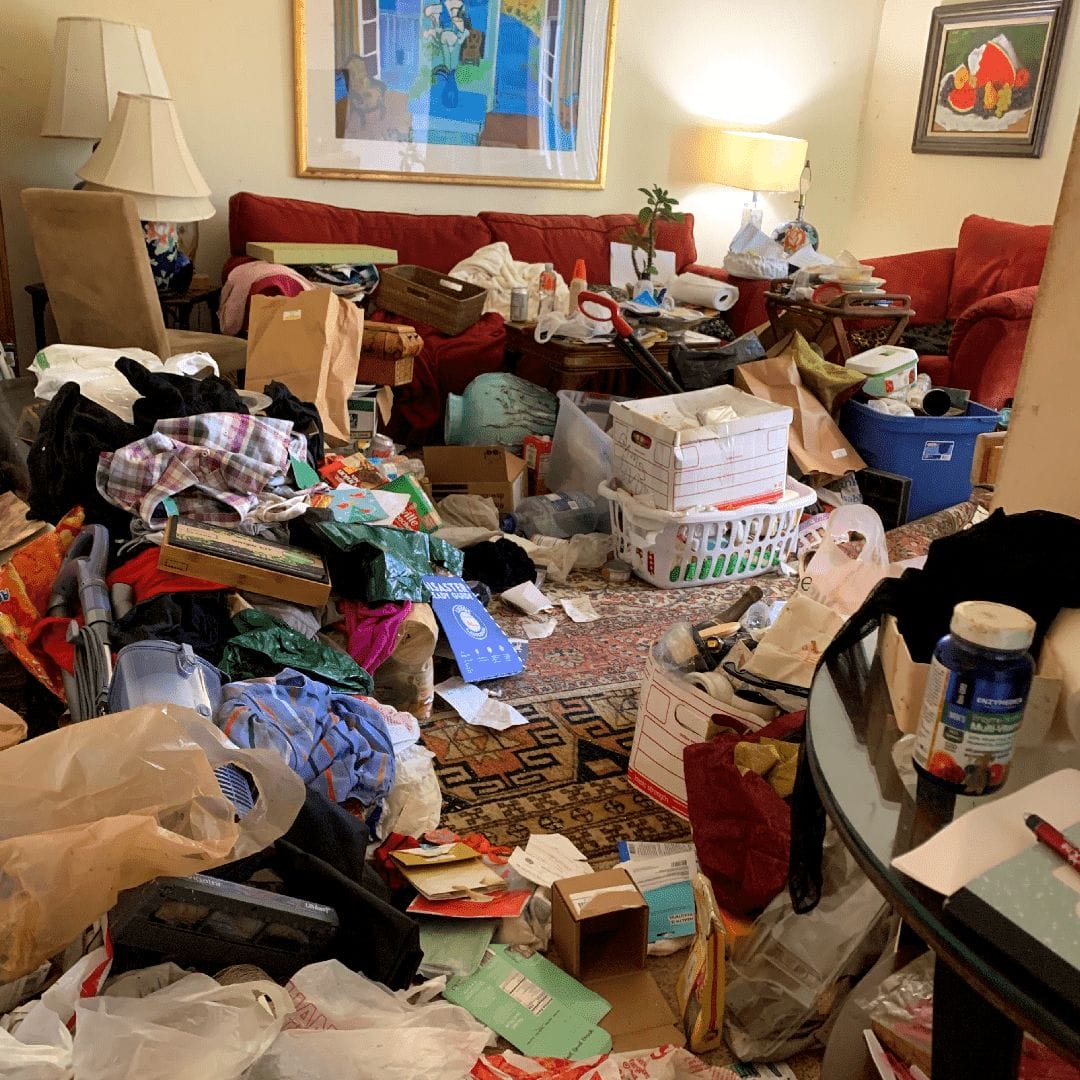
Living spaces filled to the brim with objects and clutter are one of the most obvious signs of hoarding behavior. Hoarders will typically accumulate items they believe have some significance, and they can go from storage bins, papers, and clothing, to other items. Rooms and closets may be difficult to navigate. In more severe cases, individuals may even turn to stacked items in hallways and staircases to make space for more possessions.
Individuals struggling with hoarding often attach an emotional connection to the item, which naturally results in fear of throwing things away. They believe that every object has a purpose or sentimental value, making it challenging to discard things even if they are broken or unusable. This difficulty in letting go can extend to items that most people would consider trash.
Those with hoarding behaviors often feel intense shame and embarrassment about their living conditions, which often leads to feelings of isolation. They may avoid having people over, and they may even stop inviting others to their homes. Common signs of hoarding behavior may also include a struggle with relationships due to the overwhelming nature of their possessions and fear of judgment from others.
Hoarding causes emotional distress, resulting in anxiety and depression. Individuals may become overwhelmed by their living conditions and feel hopeless about how to change them. They may also experience intense feelings of guilt for not being able to get rid of items or keep up with their responsibilities.
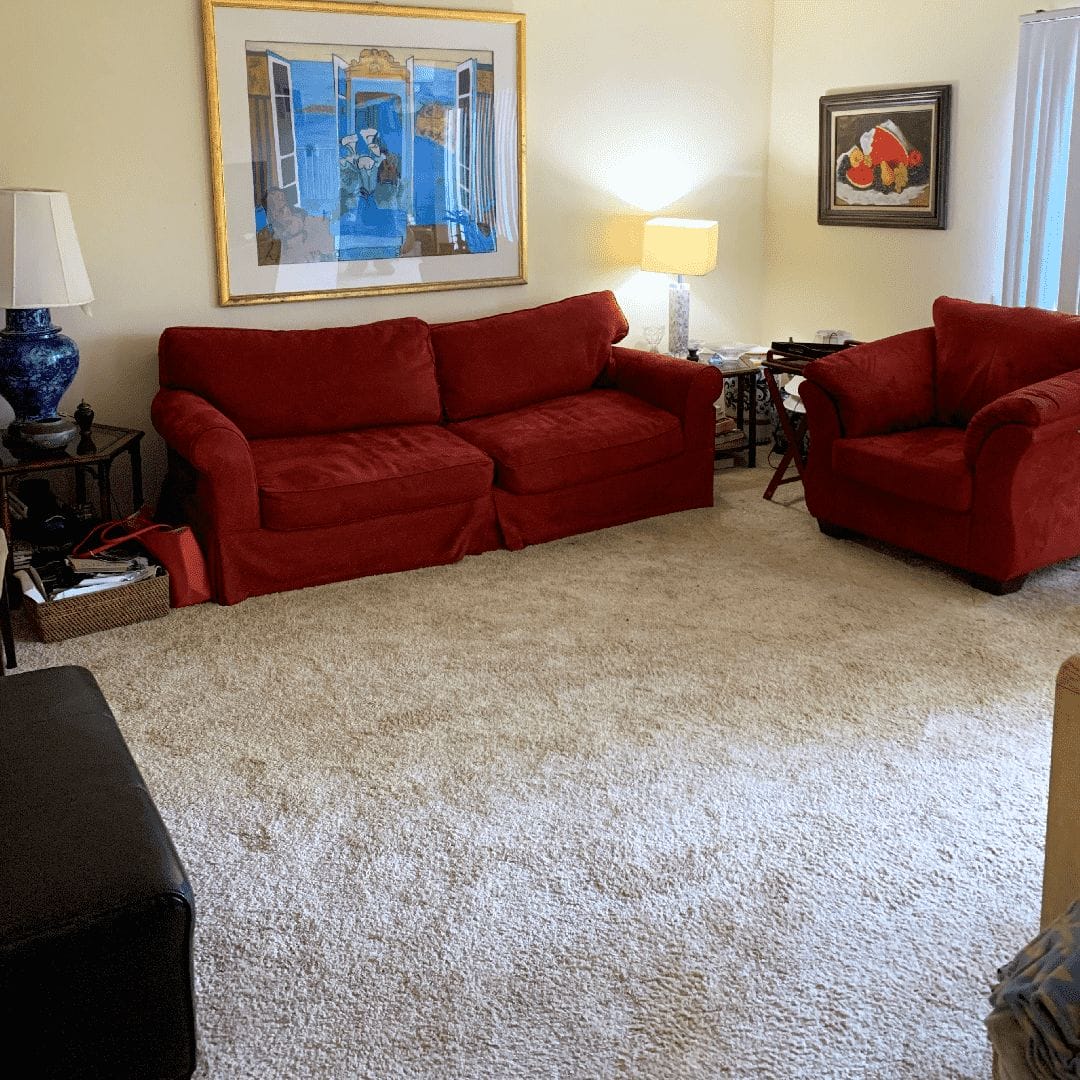
If you have a loved one struggling with hoarding, knowing how to support them without causing distress might be daunting. It's crucial to approach this sensitive topic with patience:
It's essential to understand that hoarding is a disorder and not a choice. Avoid shaming or blaming your loved one for their behavior, as this can exacerbate feelings of guilt and shame.
Taking the time to learn about Hoarding Disorder can help you better understand what your loved one is going through. It can also help you develop a more empathetic and informed approach when offering support.
Hoarding is a mental health condition that often requires professional treatment. Encourage your loved one to seek therapy or join a support group specifically for Hoarding Disorder.
Individuals with hoarding behavior may struggle with daily tasks such as cleaning, organizing, or getting rid of items. Offer to help them with these tasks, but be respectful and non-intrusive in your approach.
Respecting individual, and personal boundaries is necessary for a helpful approach. It's not about helping them let go of all their belongings right away. Rather, it’s about suggesting steps that can be taken, one at a time, to avoid overwhelming the individual.
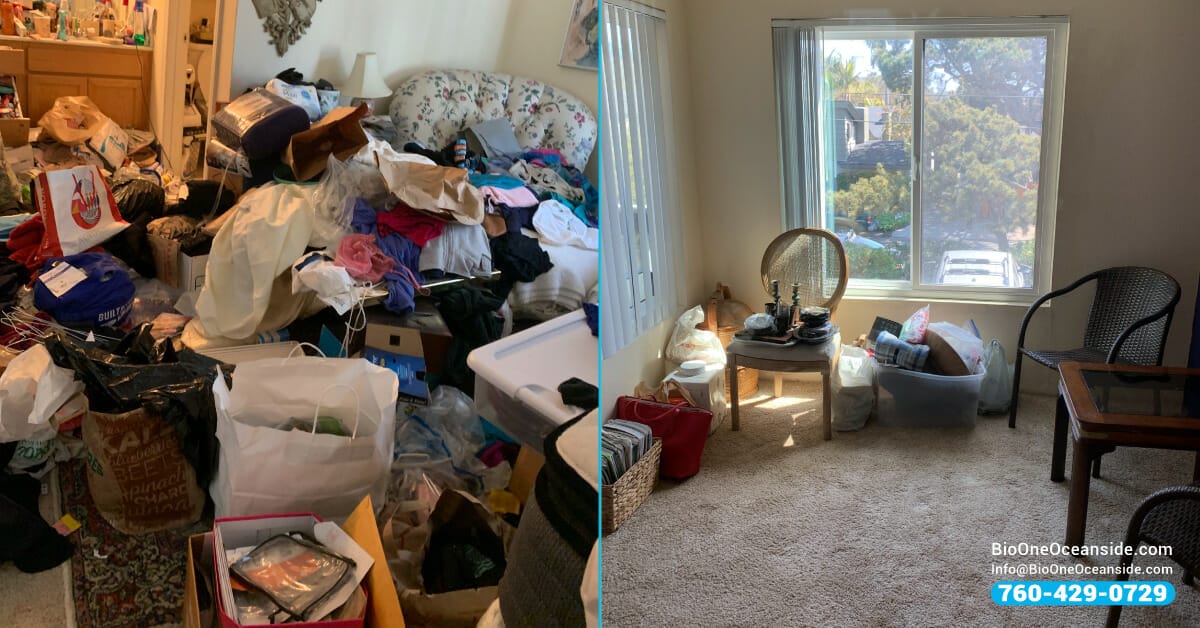
With support, compassion, and patience, your loved one can overcome this powerful urge to attach a deep emotional connection to their belongings. Remember to be gentle, supportive, and patient when handling hoarding.
Most of the time, professional help is needed for those living in a hoarding situation. Bio-One of Oceanside is a Mental Health First Aid certified company, with teams skilled in providing services to those in the communities we serve. We partner with mental health professionals and strive to offer the best hoarding cleanup and biohazard remediation services with compassion, empathy, and understanding! Contact us today and let us help you or your loved one.
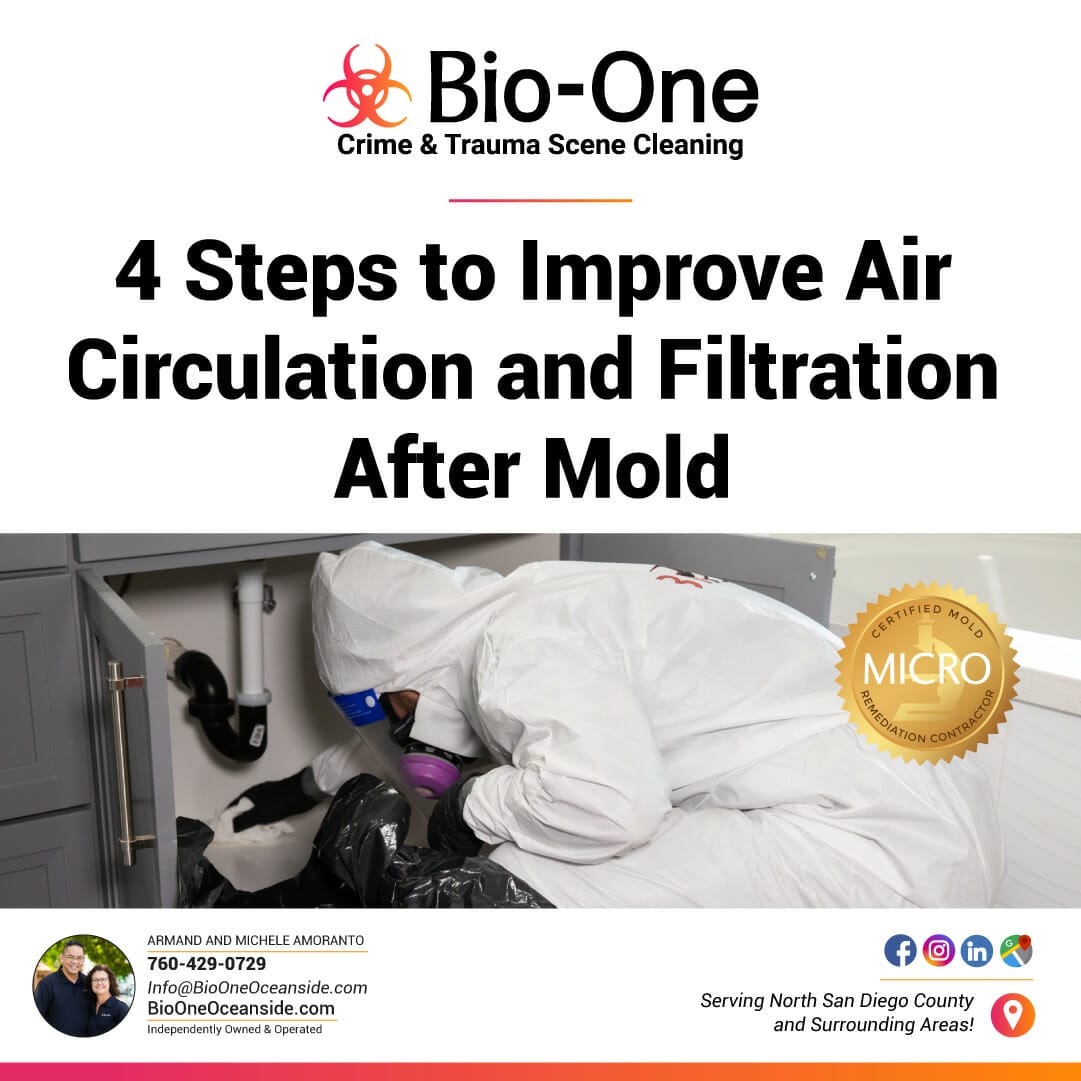
Mold is a common problem in areas with high humidity levels. Aside from the damage it causes to property, mold can also pose a serious health risk to people, especially those with respiratory problems. Clean-up after mold is not enough; you need to make sure that the air circulation and filtration in your space are working effectively to prevent the spread of spores.
In this blog post, we will discuss four steps to improve air circulation and filtration after mold. If you ever need professional help, Bio-One of Oceanside is a certified mold remediation contractor that can tackle your mold problem effectively.
Your HVAC system's filters are designed to catch dust, allergens, and other airborne particles, including mold spores. However, these filters quickly become clogged with debris, and their effectiveness decreases. When you clean up after mold, make sure to replace or maintain your air filters frequently. Check the manufacturer's recommendations for your specific filters' cleaning and replacement frequency and follow them strictly.

Proper ventilation is essential for maintaining good air circulation and preventing mold growth. Make sure that areas prone to moisture, such as bathrooms, kitchens, and laundry rooms, have proper exhaust fans. Also, make sure that your HVAC system has adequate fresh air intake and exhaust vents.
Using air purifiers will help you eliminate airborne contaminants, including mold spores. Install purifiers in every room of your space to get the most significant impact. High-efficiency particulate air (HEPA) filters are the most effective in removing mold spores. However, be sure to buy purifiers that can handle the size of your space for maximum effectiveness.
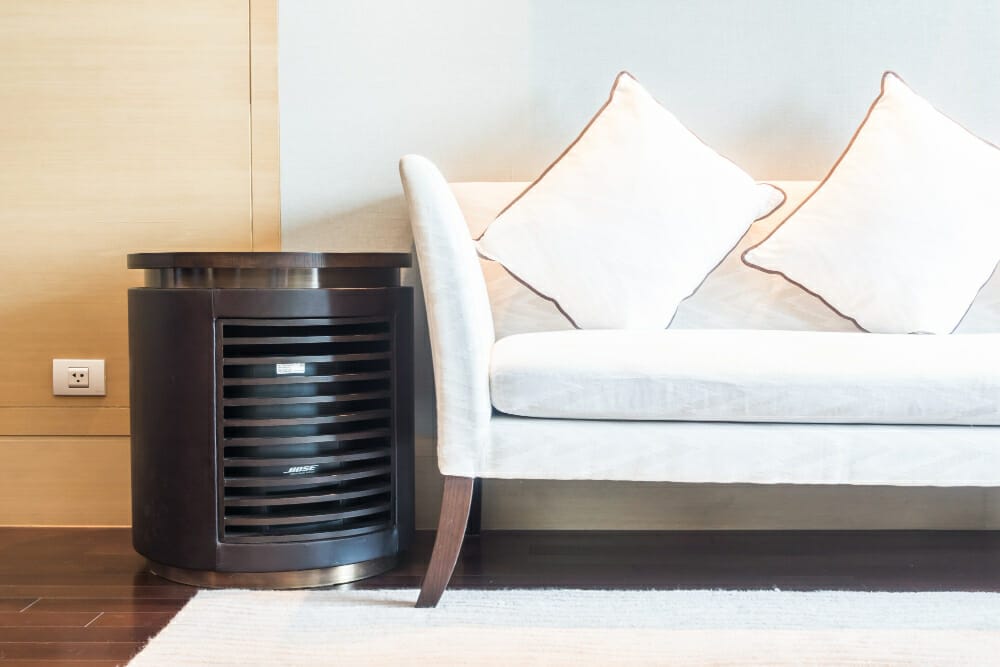
Regular HVAC maintenance will ensure its performance is optimum, preventing mold growth. Having your HVAC system serviced regularly will also help you identify potential mold hotspots and correct them as early as possible. Be sure to hire a certified technician to avoid causing more problems to your system.
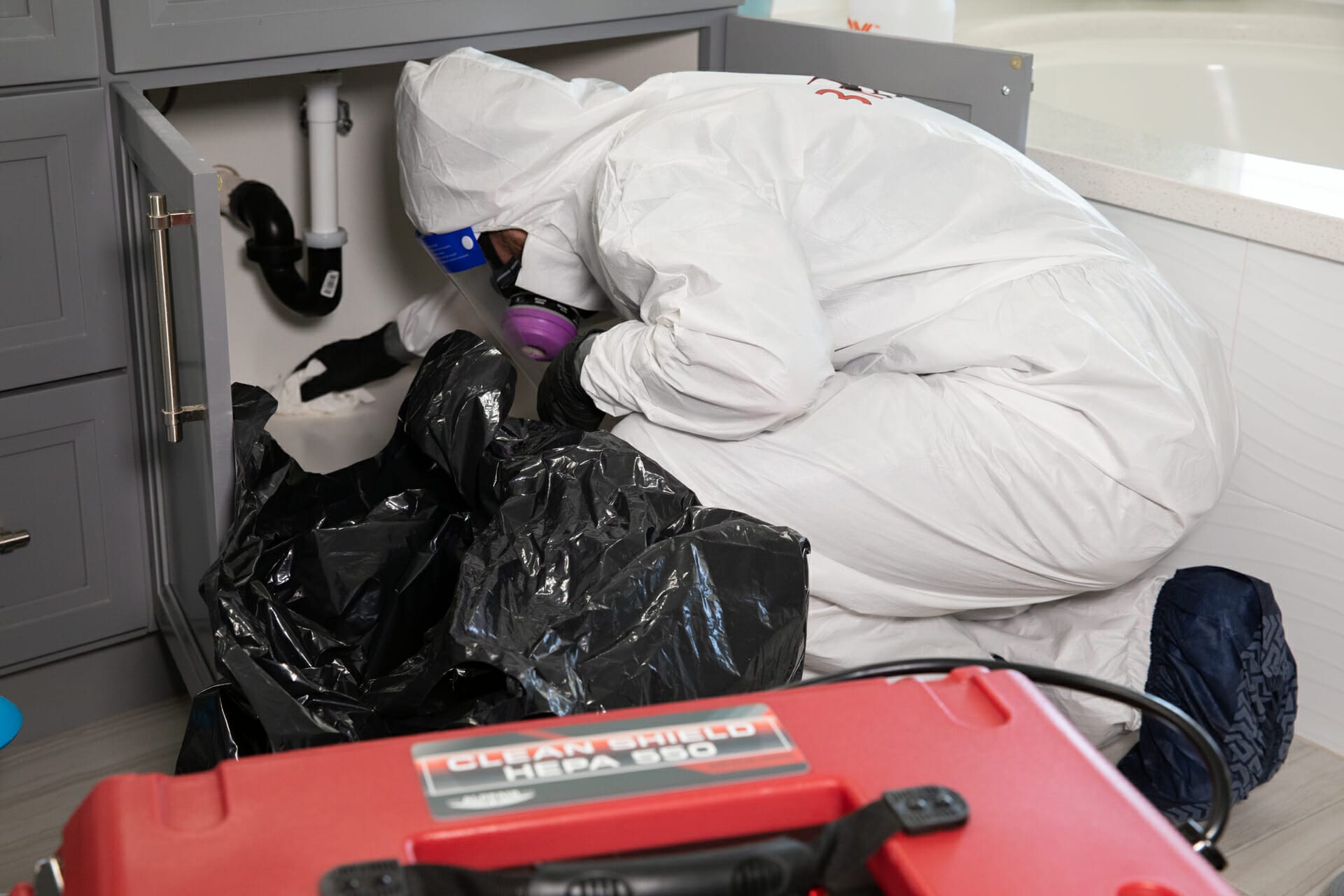
Mold requires immediate attention. Besides cleaning, improving air circulation and filtration will be crucial in preventing mold and water issues in your home or business. Remember to clean and replace air filters regularly, use air purifiers, and schedule regular HVAC maintenance.
However, if the mold problem is too severe for you to handle, seek professional help from Bio-One of Oceanside, a certified mold remediation contractor. Our team of experts will assess the situation and create a customized plan to clean up after mold safely and effectively!
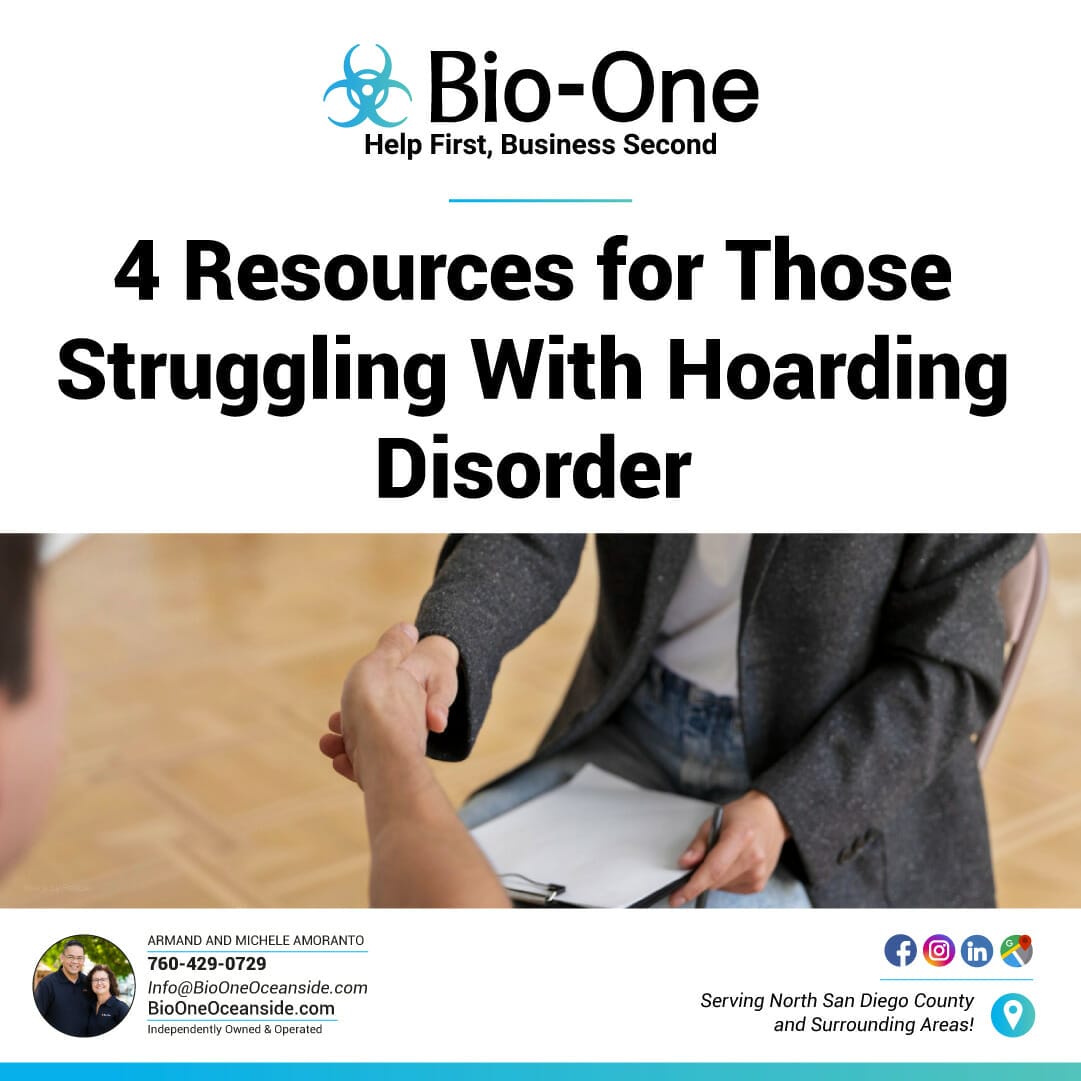
Hoarding can create significant challenges for those who struggle with it, and their loved ones. It can quickly become a debilitating and overwhelming disorder that can impact everyone's mental, emotional, and physical health. However, confronting and facing hoarding does not have to be an isolated journey. A variety of resources are available to assist those grappling with Hoarding Disorder. Here are four resources for hoarding that can help on your journey, including professional insight from our technicians at Bio-One.
The International OCD Foundation is a non-profit organization dedicated to helping people suffering from Obsessive-Compulsive Disorder (OCD) and related disorders like Hoarding Disorder. The foundation offers several resources and support groups both online and in-person, which can help people struggling with hoarding disorder gain community support, knowledge, and skills to counter hoarding tendencies.
Visit the International OCD Foundation website to learn more.
The National Association of Professional Organizers (NAPO) helps individuals and businesses organize their lives and spaces. The association comprises more than 3,500 members who provide hands-on organizing services and consultations for people struggling with Hoarding Disorder. NAPO can help people with hoarding disorder learn effective organizing and decluttering techniques to maintain a clutter-free lifestyle.
Visit the NAPO website to find an organizer near you.
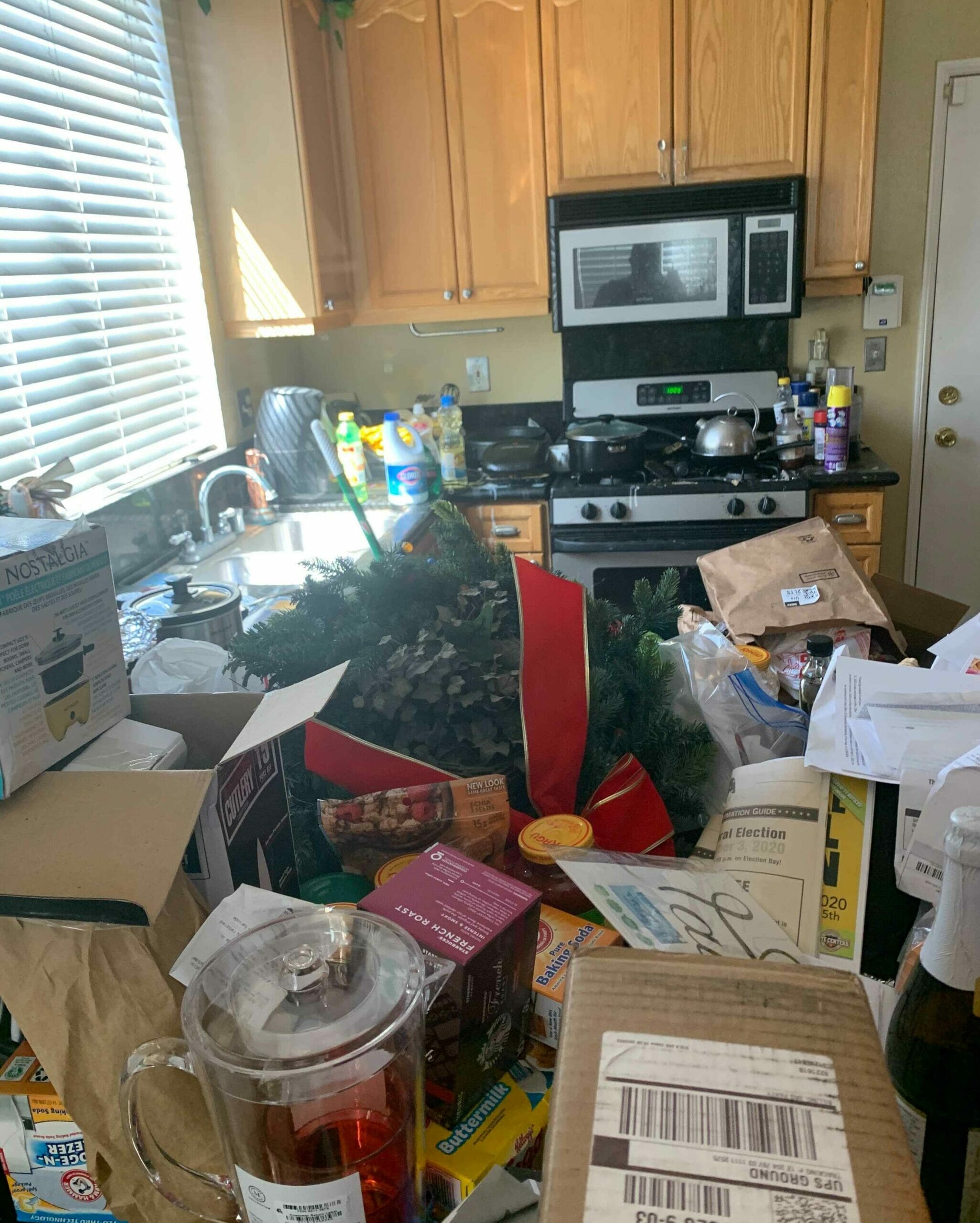
With hoarding situations, the insight and support of a mental health professional are often necessary. A mental health professional can provide therapy, understanding, and strategies to help individuals with Hoarding Disorder manage their symptoms and improve their overall well-being. Whether it is through cognitive-behavioral therapy or other types of treatment, seeking the help of a mental health professional can be incredibly beneficial for those struggling with hoarding!

Additionally, be sure to discuss with your healthcare provider about any potential underlying mental health concerns that may need to be addressed. Visit the American Psychological Association website to learn more.
Connecting with others who are going through similar challenges can be incredibly helpful for those struggling with Hoarding Disorder. Hoarding support groups provide a safe and understanding environment for individuals to share their experiences, gain support, and learn from one another. These groups are often facilitated by mental health professionals or individuals who have experience overcoming hoarding tendencies.
Visit the International OCD Foundation website to find a hoarding support group near you.
The resources highlighted above offer excellent tools and support to help people struggling with hoarding tendencies overcome this mental health condition and return to organized and healthier lifestyles. If you or someone you know is struggling with hoarding, seek support and guidance from professionals or resources available in your community.
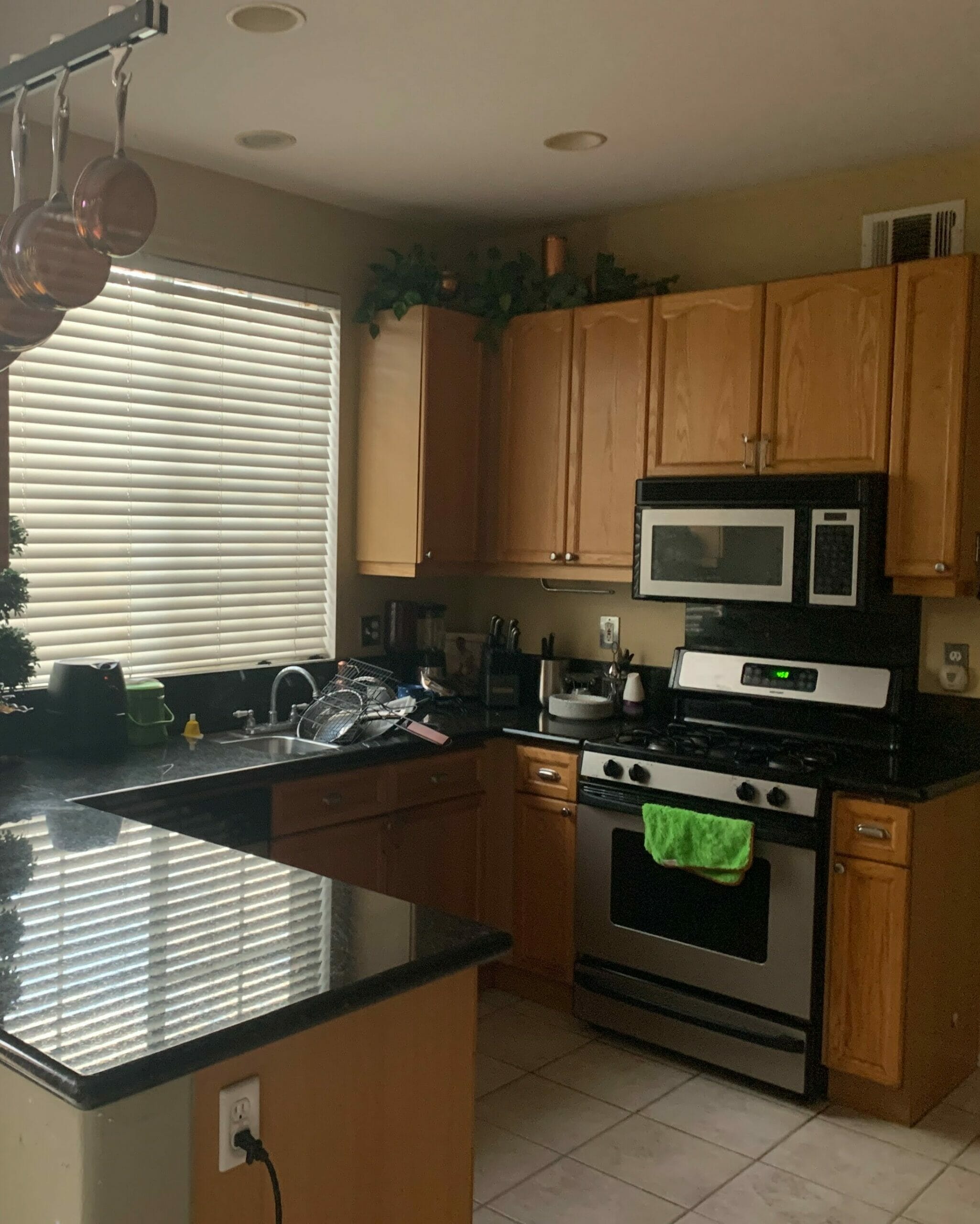
Bio-One of Oceanside can help. Our compassionate team understands the sensitive nature of hoarding situations and can provide non-judgmental assistance in restoring living spaces to safe and habitable conditions. Do not hesitate to reach out for help if you or someone you know is struggling with hoarding.